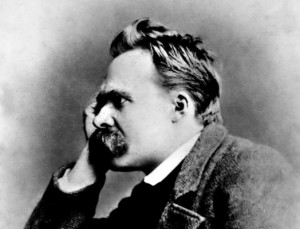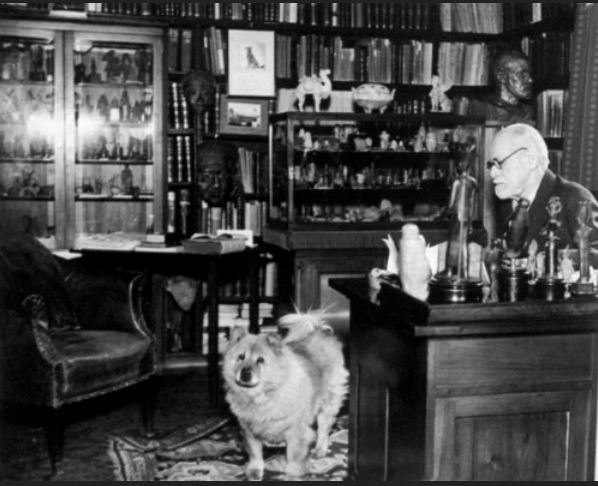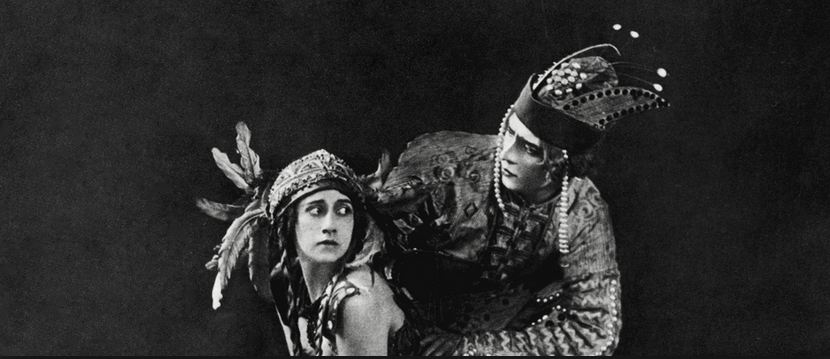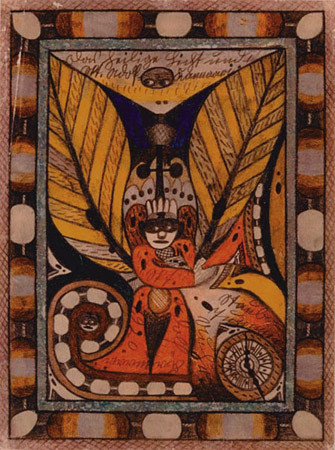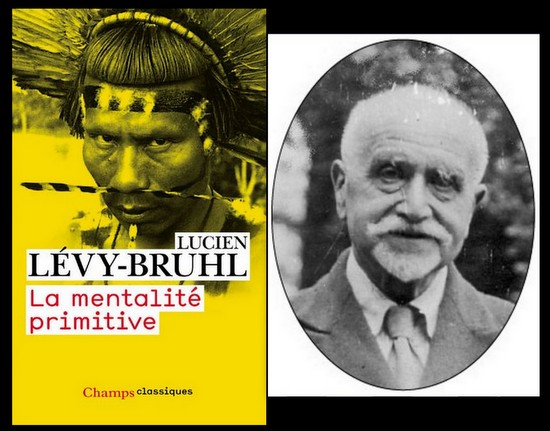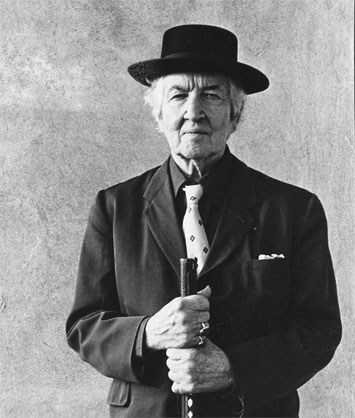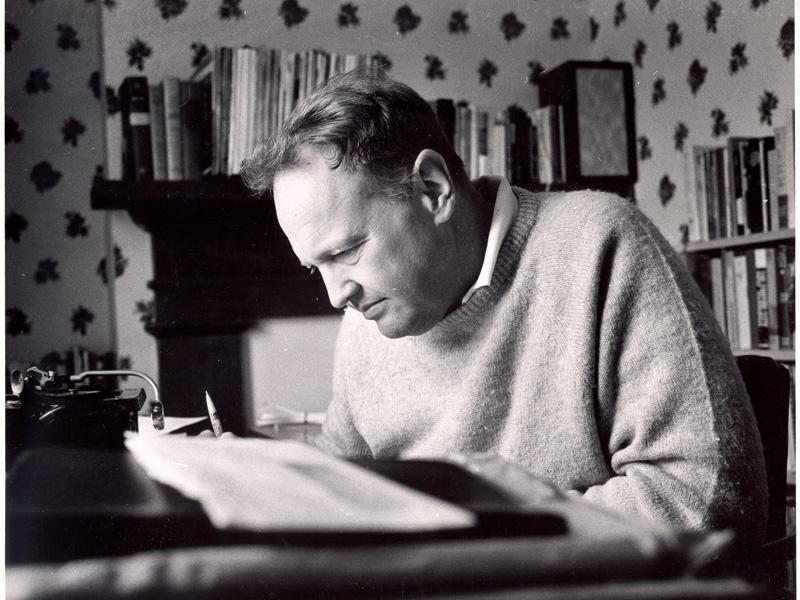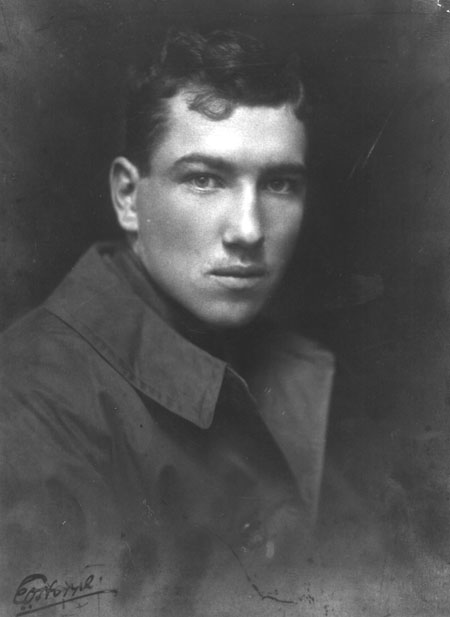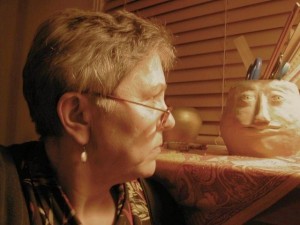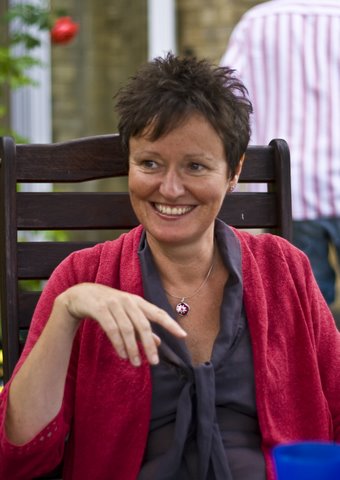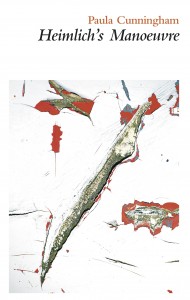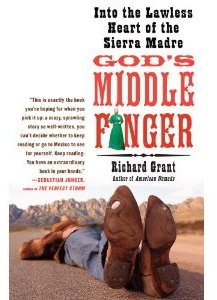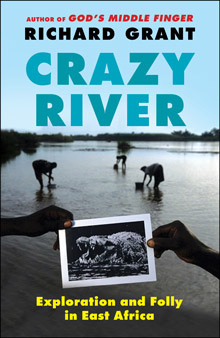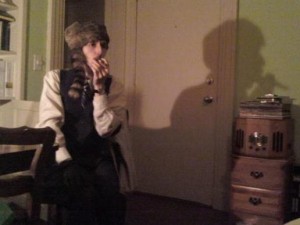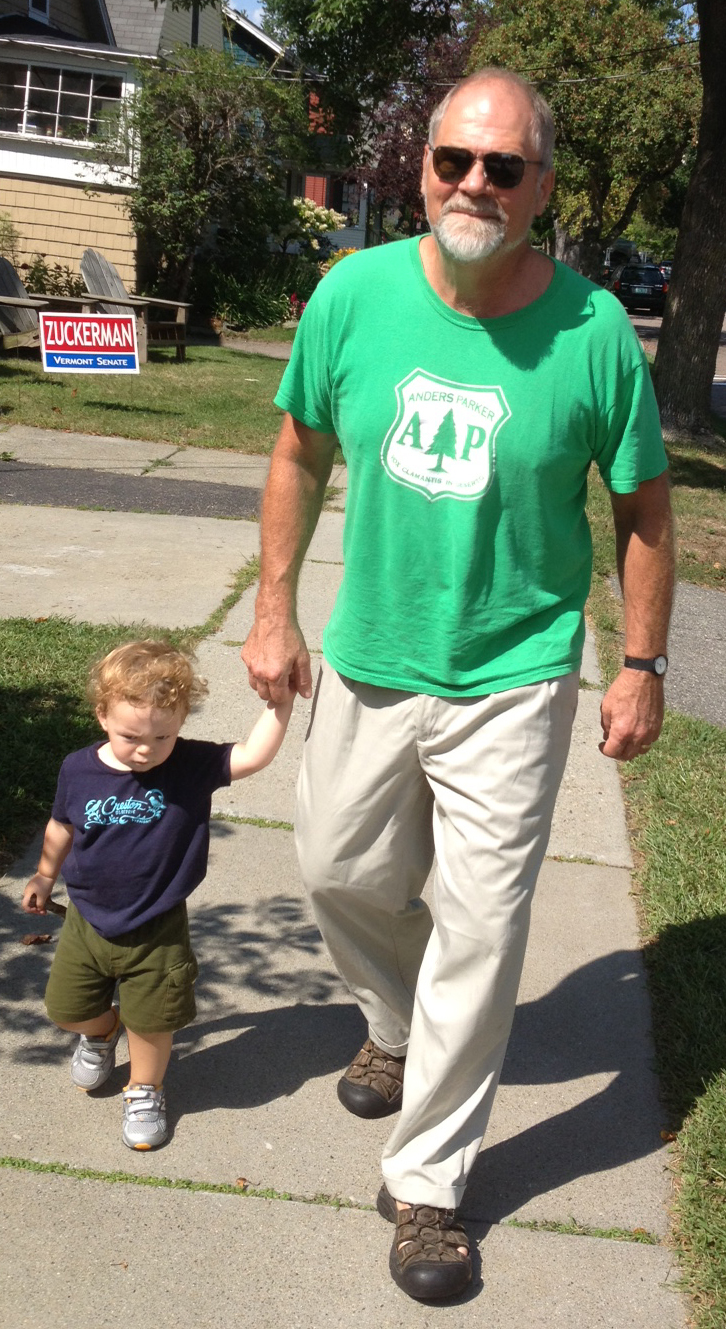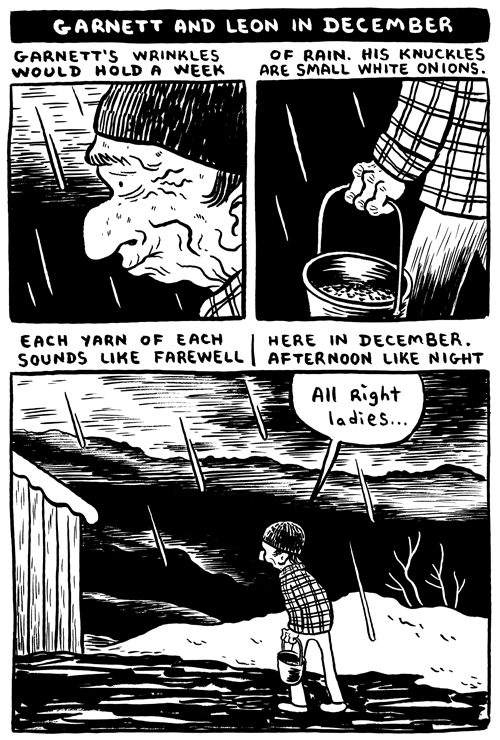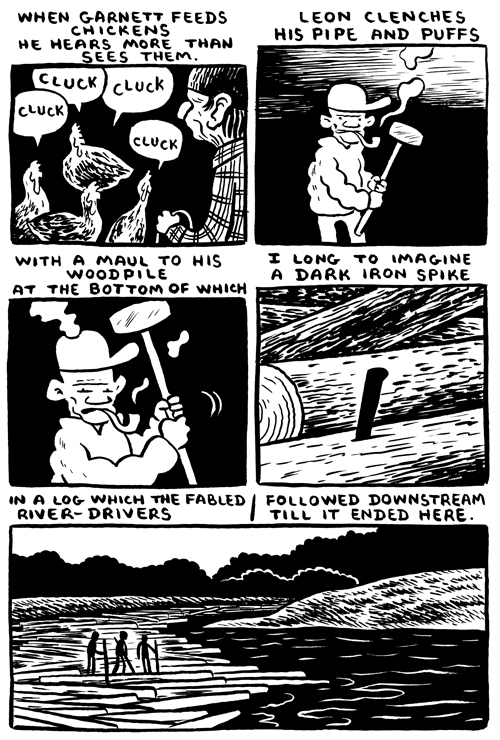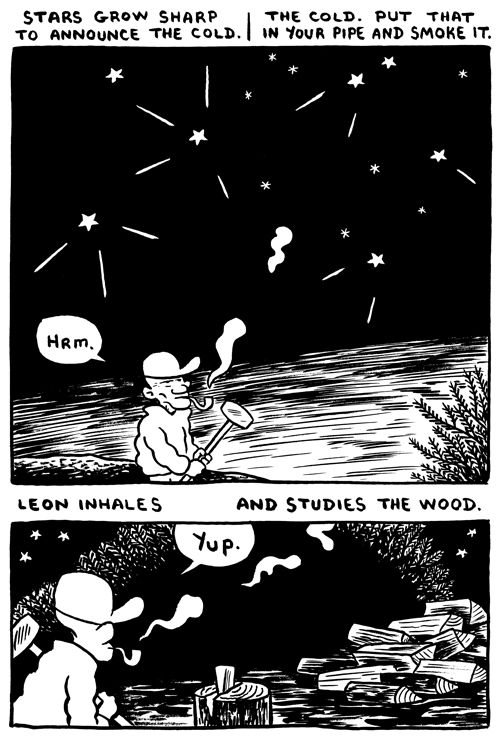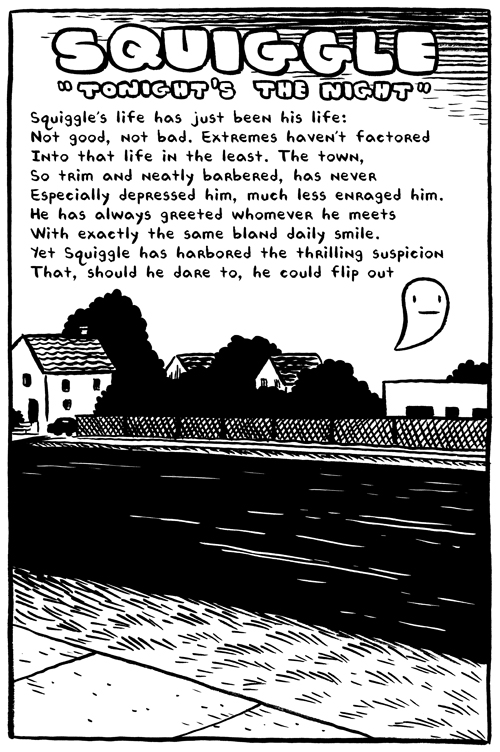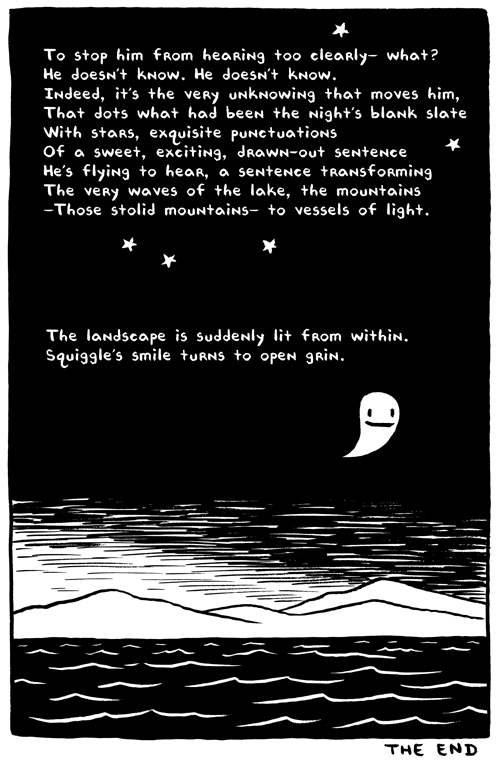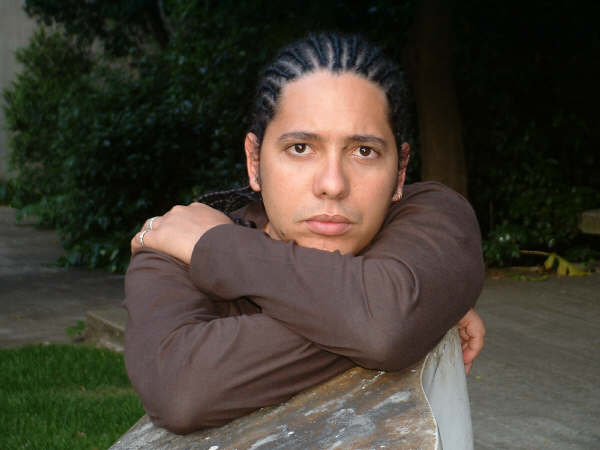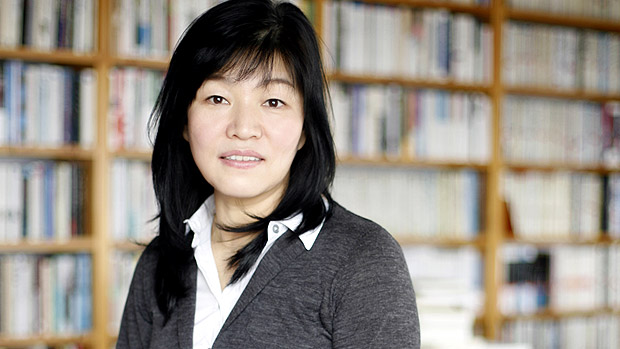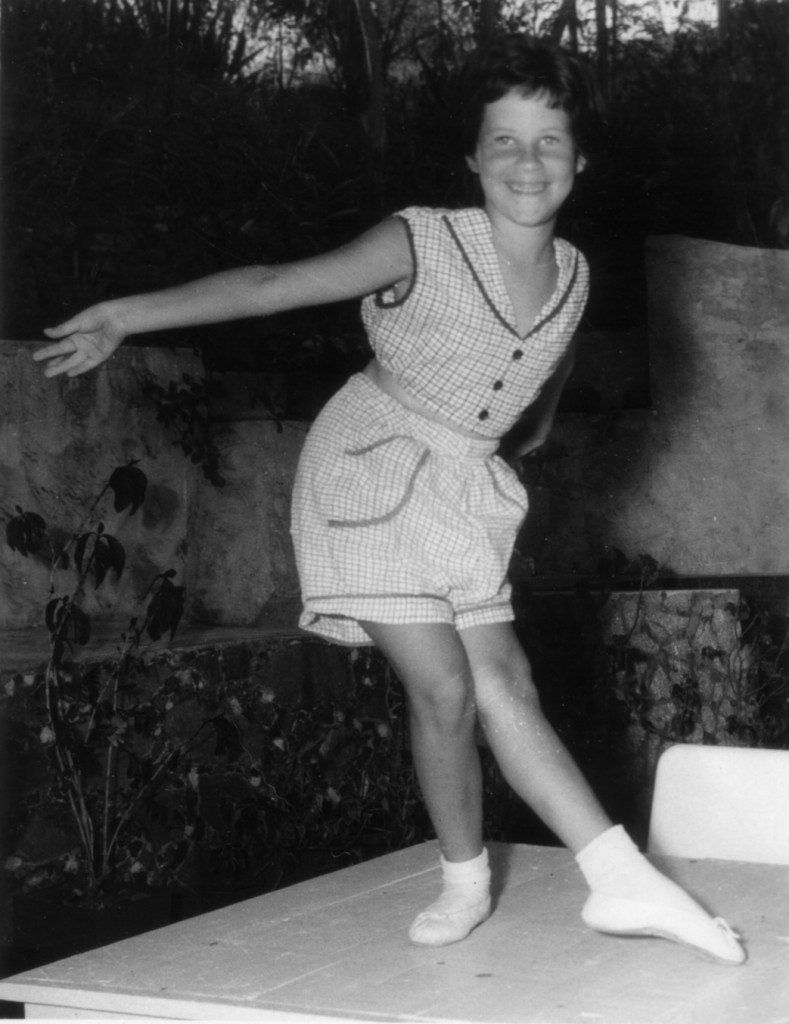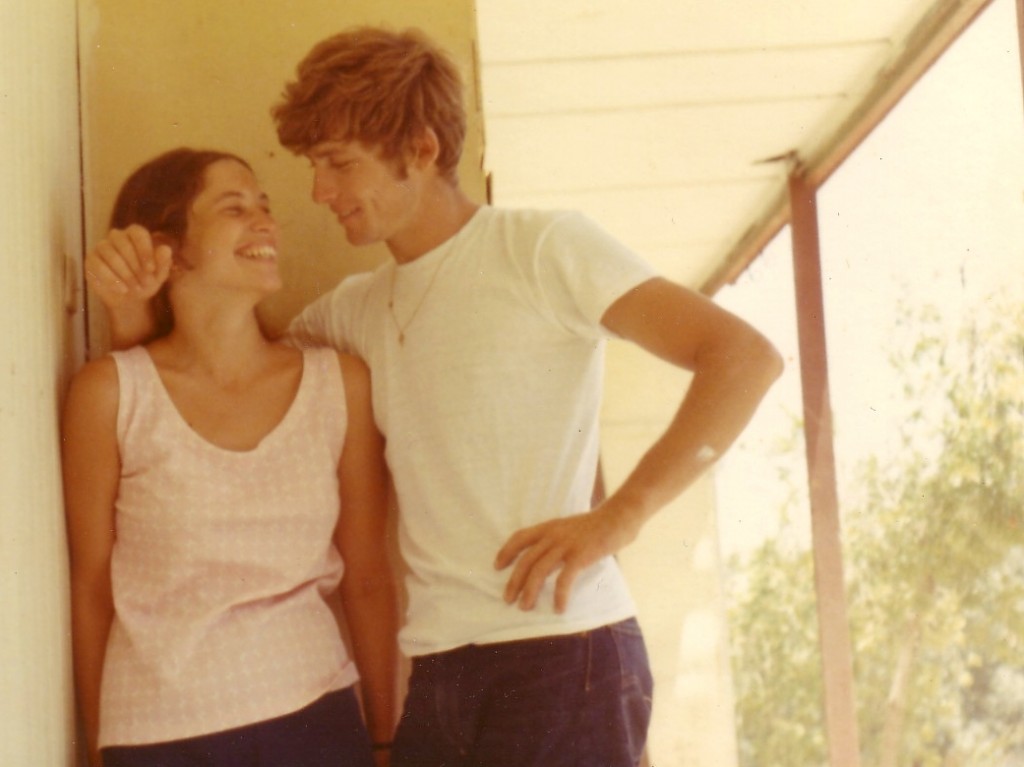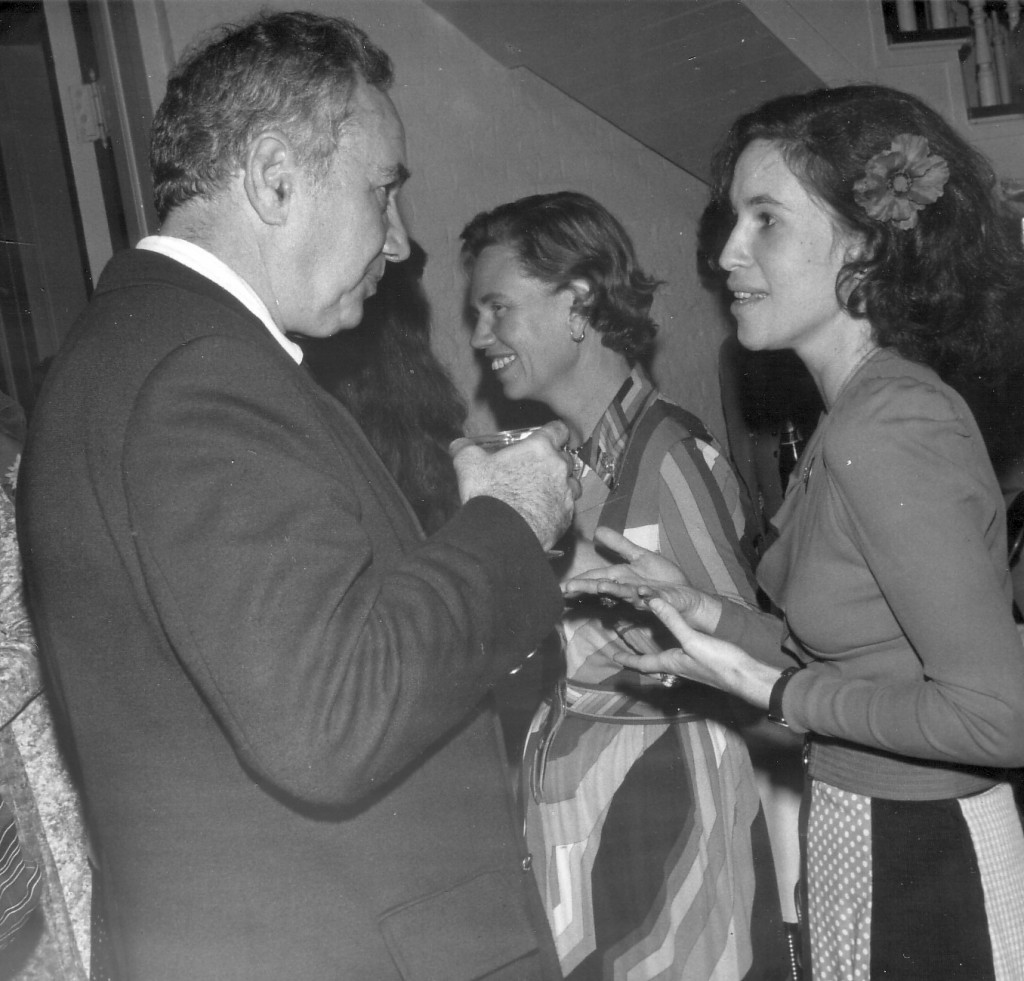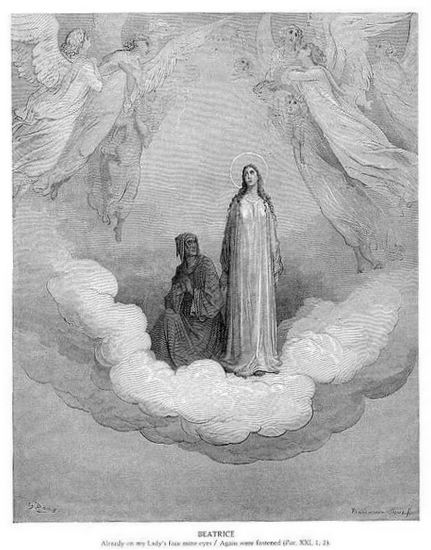 Beatrice, Gustave Doré
Beatrice, Gustave Doré
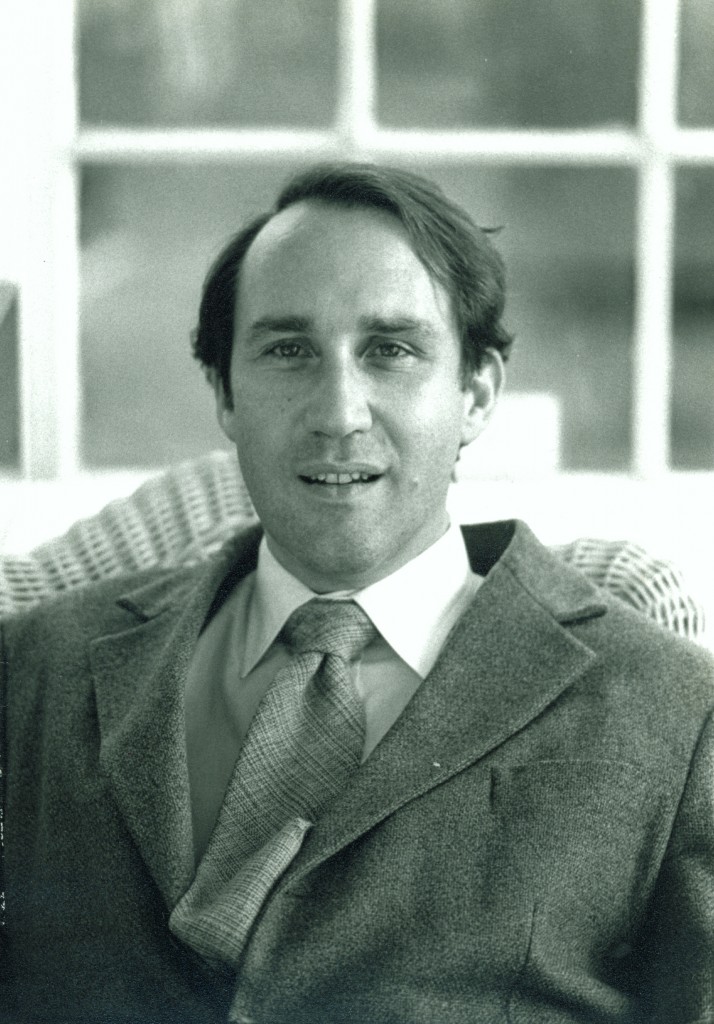 Wayne Hankey
Wayne Hankey
.
“I declare that to recommend Goodness and Innocence hath been my sincere Endeavour in this History. The honest Purpose you [his Patron] have been pleased to think I have attained: and to say the Truth, it is likeliest to be attained in Books of this Kind; for an Example is a Kind of Picture, in which Virtue becomes as it were an Object of Sight, and strikes us with an Idea of that Loveliness, which Plato asserts there is in her naked Charms.” —“Dedication,” The History of Tom Jones, a Foundling.
Of Sophia “There is indeed in perfect Beauty a Power which none almost can withstand.” —Tom Jones
“Sophia expecting to find no one in the Room, came hastily in, and went directly to a Glass which almost fronted her, without once looking towards the upper End of the Room, where the Statue of Jones now stood motionless.—In this Glass it was, after contemplating her own lovely Face, that she first discovered the said Statue; when instantly turning about, she perceived the Reality of the Vision” —Tom Jones
Jones replied “’Don’t believe me upon my Word; I have a better Security, a Pledge for my Constancy, which it is impossible to see and to doubt.’ ‘What is that?’ said Sophia, a little surprised. ‘I will show you, my charming Angel,’ cried Jones, seizing her Hand, and carrying her to the Glass. ‘There, behold it there, in that lovely Figure, in that Face, that Shape, those Eyes, that Mind which shines through those Eyes: Can the Man who shall be in Possession of these be inconstant? Impossible! My Sophia….You could not doubt it, if you could see yourself with any Eyes but your own.” —Tom Jones
“We have found beauty shining most clearly through the clearest of our senses; for sight is the sharpest of the physical senses, though wisdom is not seen by it, for wisdom would arouse terrible love, if such a clear image of it were granted as would come through sight, {{1}}[[1]] ᾗ φρόνησις οὐχ ὁρᾶται δεινοὺς γὰρ ἂν παρεῖχεν ἔρωτας, εἴ τι τοιοῦτον ἑαυτῆς ἐναργὲς εἴδωλον παρείχετο εἰς ὄψιν ἰόν[[1]] and the same is true of the other lovely realities; but beauty alone has this privilege, and therefore it is most clearly seen and most lovely.” —Phaedrus
§
Having chosen to stomp with me through history in seven league boots, you will expect neither minute accuracy nor subtlety. The aim of my outrageous generalizations is to present some features of conversion as represented over about twenty-five hundred years in the pagan and Christian west in a way which may prove illumining because not expected. Rather than looking at conversion as primarily a religious phenomenon, though not leaving this out, I shall mainly present it as psychic, ontological, and secular.{{2}}[[2]] Thus it owes nothing to the Conversion of A.D. Nock (Oxford University Press, 1933) which is almost exclusively, despite a chapter on conversion to philosophy, about conversions between religions and to them. It has much in common, however, with the even more learned classic of Gerhart B. Ladner, The Idea of Reform: Its Impact on Christian Thought and Action in the Age of the Fathers (1959), for example, the use of convertere by Augustine.[[2]] Moreover, although these three aspects can be seen together at almost every point, in order to bring out differences, I shall stress the psychological through Plato’s dialogues, the ontological through Neoplatonic–Peripatetic systems, and the secular through 18th and early 19th century novels of Samuel Richardson, Henry Fielding and Jane Austen. The elements touched on from Plato and his Late Ancient and Medieval successors will largely be determined by what is modified or suppressed by our cast of English novelists.
Our conclusion with Tom Jones would justify beginning with the Odyssey and its hero’s conversion as return home drawn by the faithful Penelope; Fielding, the Etonian, the most learned mythologically and philosophically of our novelists, looks back to that paradigm.{{3}}[[3]] Henry Fielding, The History of Tom Jones. A Foundling, IV,xiii: she is “the great pattern of matrimonial love and constancy”. I use Fredson Bowers text with Martin Battenstin’s notes (2 vol., Wesleyan Edition 1975) as reprinted in a single volume, The Modern Library 1994.[[3]] I begin rather with a foundational and secular representation, that of the Cave and the Line in Plato’s Republic. There the gods and religious practice are not mentioned, either as the goal or means of the conversion. They stand in the background, because Parmenides’ The Way of Truth belongs to that. They are certainly found as end and means in the ἀναγωγή described by Diotima in the Symposium and in the Gnothi seauton of the Alcibiades to which the Cave conversion is assimilated in the Platonic tradition. The divine and religious practice will belong to the Platonic ἀναγωγή, not only for the Middle and Neoplatonists, but also when the Abrahamic monotheisms and Platonism merge so as to determine a fundamental of the Western religious and philosophical traditions. There, most notoriously in Augustine’s account of the Trinity and in its Latin successors, even the Divine Being will convert upon Itself.{{4}}[[4]] See my “Theoria versus Poesis: Neoplatonism and Trinitarian Difference in Aquinas, John Milbank, Jean-Luc Marion and John Zizioulas” Modern Theology, 15:4 (1999): 387-415 at 406 on Aquinas: “[T]he divine knowing, as source, is Father; as the essence known, thus, as object, it is Son. ‘The Son understands not by producing a word but as being a word which comes forth from another.’ Father and Son are thus opposed as well as united. The opposition engendered must be overcome. The connexio duorum is the Spirit who receives his being from both as love. As Aquinas says, ‘If you leave out the Spirit, it is not possible to understand the unitas connexionis inter Patrem et Filium.’ Aquinas is explicit that this whole trinitarian process is an exitus and reditus. It is the basis of that other going out and return which is creation.”[[4]]
/
From the Cave to the Divine Mirror: Conversion in the Republic, the Symposium, and the Alcibiades{{5}}[[5]] Guest Lecture sponsored by CREOR, McGill Centre for Research on Religion / Centre de research sur la religion in partnership with ‘Early Modern Conversions’ Tuesday, 18 February[[5]]
By way of the analogy of the Cave, the movement, of the prisoners bent down by their chains, up the Line from ignorance, non-being, and darkness to knowledge, being, light and their source, the Good, is “to turn around” (στρέφειν). A journey upwards, a conversion (ἀναγωγή or περιαγωγή) is required. This demands someone with the art of leading around (τέχνη…τῆς περιαγωγῆς), who can convert (μεταστραφήσεται). Ultimately this requires that someone who has seen the light return to the dark to help the prisoners break their chains, turn around, move upwards and out.{{6}}[[6]]Plato Republic VI,509d-VII,521b. At 515c ὁπότε τις λυθείη καὶ ἀναγκάζοιτο ἐξαίφνης ἀνίστασθαί τε καὶ περιάγειν τὸν αὐχένα καὶ βαδίζειν καὶ πρὸς τὸ φῶς ἀναβλέπειν; 517a ὅτι οὐκ ἄξιον οὐδὲ πειρᾶσθαι ἄνω ἰέναι; καὶ τὸν ἐπιχειροῦντα λύειν τε καὶ ἀνάγειν; 517d τὸ δὲ τοῦ πυρὸς ἐν αὐτῇ φῶς τῇ τοῦ ἡλίου δυνάμει: τὴν δὲ ἄνω ἀνάβασιν καὶ θέαν τῶν ἄνω τὴν εἰς τὸν νοητὸν τόπον τῆς ψυχῆς ἄνοδον τιθεὶς; 518c οἷον εἰ ὄμμα μὴ δυνατὸν ἦν ἄλλως ἢ σὺν ὅλῳ τῷ σώματι στρέφειν πρὸς τὸ φανὸν ἐκ τοῦ σκοτώδους, οὕτω σὺν ὅλῃ τῇ ψυχῇ ἐκ τοῦ γιγνομένου περιακτέον εἶναι, ἕως ἂν εἰς τὸ ὂν καὶ τοῦ ὄντος τὸ φανότατον δυνατὴ γένηται ἀνασχέσθαι θεωμένη; 518d τούτου τοίνυν, ἦν δ᾽ ἐγώ, αὐτοῦ τέχνη ἂν εἴη, τῆς περιαγωγῆς, τίνα τρόπον ὡς ῥᾷστά τε καὶ ἀνυσιμώτατα μεταστραφήσεται, οὐ τοῦ ἐμποιῆσαι αὐτῷ τὸ ὁρᾶν, ἀλλ᾽ ὡς ἔχοντι μὲν αὐτό, οὐκ ὀρθῶς δὲ τετραμμένῳ οὐδὲ βλέποντι οἷ ἔδει, τοῦτο διαμηχανήσασθαι.[[6]] The resulting soteriology is most influentially and completely worked out philosophically by Iamblichus and Proclus. Religions, pagan, Jewish, Christian, Muslim have this idea and these images at their centre and a converting saviour or saviours (Protagoras, Moses, Jesus, Mohammed).
 via globalnet.co.uk
via globalnet.co.uk
 Plato’s Cave
Plato’s Cave
Convergence of the Abrahamic religions and Platonism in respect to this Platonic conversion was assisted by ἐπίστρεψον in the repeated refrain “Turn us again, O Lord; show us the light of thy countenance (πρόσωπόν) and we shall be saved” of Psalm 79 in the Septuagint, translated in the Vulgate and English by convert,{{7}}[[7]]Septuagint Psalm 79,4: ὁ θεός, ἐπίστρεψον ἡμᾶς καὶ ἐπίφανον τὸ πρόσωπόν σου, καὶ σωθησόμεθα.[[7]] and by the use of the same language in both works in Lamentations 5.{{8}}[[8]]Septuagint Lamentations 5,21: ἐπίστρεψον ἡμᾶς, κύριε, πρὸς σέ, καὶ ἐπιστραφησόμεθα· καὶ ἀνακαίνισον ἡμέρας ἡμῶν καθὼς ἔμπροσθεν. Vulgate: converte nos Domine ad te et convertemur innova dies nostros sicut a principio.[[8]] Equally, the representation of that from which we are saved encourages assimilation. We are bent down (κατεκάμφθην),{{9}}[[9]]Septuagint Psalm 37,7: ἐταλαιπώρησα καὶ κατεκάμφθην ἕως τέλους,[[9]] incurvatus in Latin, which describes for Augustine the state of the idolater divinizing material objects,{{10}}[[10]] Augustine, Sermon 223A.[[10]] and, when the Prayer of Manasse added “by many chains of iron”, it is not surprising to find that quoted by Aquinas.{{11}}[[11]]In Super Psalmos Davidis Expositio 37.3 and 37.4. His Bible placed it at the end of 2 Chronicles. It was not in the Vulgate. It is now given as the Prayer of Manasse: 10: “Incurvatus sum multo vinculo ferri”. LXX,10 “κατακαμπτόμενος πολλῷ δεσμῷ σιδήρου”.[[11]] Anselm may be linking the Psalm with Boethius who certainly knew Plato’s text when he describes the fallen children of Adam as “bent over double so that they can only see down.”{{12}}[[12]]Anselm Proslogion cap. 1: incurvatus non possum nisi deorsum aspicere.[[12]] Bonaventure is looking back to Anselm when he describes fallen blind humanity as “incurvatus in tenebris.”{{13}}[[13]]Bonaventure, Itinerarium, 1,7: “Secundum enim primam naturae institutionem creatus fuit homo habilis ad contemplationis quietem, et ideo posuit eum Deus in paradiso deliciarum. Sed avertens se a vero lumine ad commutabile bonum, incurvatus est ipse per culpam propriam, et totum genus suum per originale peccatum, quod dupliciter infecit humanam naturam, scilicet ignorantia mentem et concupiscentia carnem; ita quod excaecatus homo et incurvatus in tenebris sedet et caeli lumen non videt…”[[13]]
The Consolation of Philosophy might be called a secularized Christianity insofar as that religion is assimilated to the common Platonism of Late Antiquity and never shows itself directly. The itinerarium of the imprisoned and condemned Boethius begins with his eyes cast down to the earth “in terram defixo,” so that saving Philosophia must sit or bend down to come to him.{{14}}[[14]]Boethius Consolatio IP1.13 and IIIP2.1: Tum defixo paululum uisu et uelut in augustam suae mentis sedem receptasic coepit. The ascent from the Cave and a return are placed at the very end of Book III: IIIM12,53-58: quicumque in superum diem mentem ducere quaeritis; nam qui Tartareum in specus uictus lumina flexerit, quicquid praecipuum trahit perdit dum uidet inferos[[14]] Its centre, in every sense, is the famous prayer, “O Qui Perpetua,” sung by Philosophia on the authority of Plato’s Timaeus, and summarizing its doctrine, so as to effect the conversion of human ratio beyond itself up the Line to intellectus.{{15}}[[15]] Boethius Consolatio IIIM9. [[15]] Beatrice, “cerchiato de le fronde di Minerva” in the Commedia, effects the same for Dante.{{16}}[[16]] She stands between truth and his intellect: Purgatorio 6,38: ”lume fia tra ‘l vero e lo ‘ntelletto.” Her appearance crowned with the Athena’s olive leaves is at 30,68.[[16]] Tom Jones is converted to and by Sophia, but she is best translated as “prudence”. Its conclusion in Boethius and Dante is the Plotinian simplification of vision so that reason is drawn toward the divine intuition. Central to its means is a knowledge of the nature of Fortuna, unceasing change, which is mostly gained by humans from the experience of practical life. In common with the Platonic tradition, e.g. Plotinus, Iamblichus, and Proclus, Boethius teaches that Fate or Fortune operates under, and is an instrument of, Providence which characteristically brings good out of evil.{{17}}[[17]] See my “God’s Care for Human Individuals: What Neoplatonism gives to a Christian Doctrine of Providence”, Quaestiones Disputatae 2: 1 & 2 (Spring –Fall 2011): 4–36 and “Providence and Hierarchy in Thomas Aquinas and the Neoplatonic Tradition,” for The Question of Nobility. Aspects of Medieval and Renaissance Conceptualization of Man, ed. by Andrea A. Robiglio, Studies on the Interaction of Art, Thought and Power 8, Leiden-New York, Brill, 2014, in press.[[17]] The use of Fortune by Providence, and the Providential drawing of good out of evil, are essential to Tom Jones and the other secular accounts of conversion.
 Interview between Tom Jones and Sophia Western
Interview between Tom Jones and Sophia Western
Plato and Aristotle turn the Delphic Gnothi seauton into a means of conversion by a reversal of Socratic philosophical religion where it agrees with the poets as the inspired revealers of Hellenic religion. For Socrates, only God is wise and the Delphic Gnothi seauton is directed against hubristic human pretence to know. In contrast, for Plato and Aristotle, it is a command to know what we are through knowing the divine, so (to quote Aristotle who will be taken up by Plotinus in this and much else) “being human we are not to think like mortals” but rather strive to participate the divine life.
The main dialogue employed for teaching the discipline of self-knowledge was the Alcibiades Major of Plato. In it Socrates, as the faithful lover, is represented in conversation with Athens’ most fatally beautiful kouros. Read early by those being educated in the Neoplatonic schools, the Oracle’s admonition is interpreted so as to require knowledge of self through the higher namely: the soul, the true lover and guide, and, ultimately, God. Mirroring is essential to understanding both what is (as theophany) and our knowing. Once again there is an important convergence. St Paul, writing to the Corinthians about the itinerarium love travels from lower to higher kinds of knowing until it reaches the mutual divine human intuition Boethius sought, compares our present knowledge to obscure vision through a mirror.{{18}}[[18]] I Corinthians 13.12-13: βλέπομεν γὰρ ἄρτι δι’ ἐσόπτρου ἐν αἰνίγματι, τότε δὲ πρόσωπον πρὸς πρόσωπον· ἄρτι γινώσκω ἐκ μέρους, τότε δὲ ἐπιγνώσομαι καθὼς καὶ ἐπεγνώσθην. [[18]] Plotinus uses mirroring repeatedly and variously, so, for example, the presence of soul to bodies is spoken of “as giving images of itself, like a face seen in many mirrors.”{{19}}[[19]] Ennead 1.1.8: εἴδωλα δὲ αὐτῆς διδοῦσα, ὥσπερ πρόσωπον ἐν πολλοῖς κατόπτροις.[[19]] We may say that Dante meets Beatrice in and as mirror.{{20}}[[20]] The movement to the masque and its mirrors begins, when Virgil departed, Beatrice speaks and names herself. Dante looks down and sees himself mirrored in water (the first mirrors of the world of forms for the ascending prisoner of the Cave), but in this presence such self-knowledge is too much to bear. 30,76: Li occhi mi cadder giù nel chiaro fonte; ma veggendomi in esso, i trassi a l’erba, tanta vergogna mi gravò la fronte.[[20]] It is especially important for the representation of Sophia and Allworthy in Tom Jones, that mirroring enables transcendence and immanence simultaneously. With such a convergence of Plotinus and Paul, it is not surprising that the mirror is important to Augustine, most notably in the De Trinitate which depends on moves back and forth between the Divine Trinity and its images in the human and other creatures.{{21}}[[21]] Augustine De Trinitate X,2, XIV,5, XV,3 provide examples. [[21]] The Itinerarium mentis in Deum of Augustine’s disciple Bonaventure represents everything through an infinitely complex system of mirrors, and conversion up the Line is from one kind of mirroring to a higher.{{22}}[[22]] Bonaventure Itinerarium I,5: in quantum contingit videre Deum in unoquoque praedictorum modorum ut per speculum et ut in speculo.[[22]]
 Dante and Beatrice, Henry Holiday, 1884 via Wikipedia
Dante and Beatrice, Henry Holiday, 1884 via Wikipedia
The ultimate goals of conversion are both given in the analogy of the Line and they correspond to the two ideas of God which will develop in the Western tradition: God as the identity of thought and being, at the top of the Line, and, above it, God as the source of thought and being but beyond both. The Good transcends the Line and its vertical division between the kinds of apprehension and their objects.{{23}}[[23]] Republic VI,509b: οὐκ οὐσίας ὄντος τοῦ ἀγαθοῦ, ἀλλ᾽ ἔτι ἐπέκεινα τῆς οὐσίας πρεσβείᾳ καὶ δυνάμει ὑπερέχοντος.[[23]] The first will be definitively deified in Aristotle’s highest substance, the self-thinking thought. It merges with the divinity of the Abrahamic religions when the Septuagint translated the “I am that I am” in terms of einai, which, as idipsum esse, is the most proper name of God for Aquinas and Augustine. {{24}}[[24]] Exodus 3,14: καὶ εἶπεν ὁ θεὸς πρὸς Μωυσῆν ᾿Εγώ εἰμι ὁ ὤν·[[24]] The Good ἐπέκεινα (Beyond), when merged with the One Non-Being of the Parmenides dialogue, will point to Plotinus’ Father God beyond nous and, when Proclus’ Commentary on the Parmenides is added into the tradition, will point us to the ultimate of the Mystical Theology of the Areopagite, so profoundly and widely influential. Of course the goal of conversion is not mere theory in the limited sense of that, but is given in yet another dialogue, the Theaetetus “to become like God as much as possible.” (ὁμοίωσις θεῷ κατὰ τὸ δυνατόν){{25}}[[25]] Theaetetus, 176a–b: Socrates. Evils, Theodorus, can never pass away; for there must always remain something which is antagonistic to good. Having no place among the gods in heaven, of necessity they hover around the mortal nature, and this earthly sphere. Wherefore we ought to fly away from earth to heaven as quickly as we can; and to fly away is to become like God, as far as this is possible; and to become like him, is to become holy, just, and wise.[[25]] For Jews and Christians this is put in terms of Genesis. The goal is to move from “image” to “likeness”.{{26}}[[26]] Philo, De Opif. 70-71, And again, being raised up on wings,… it is borne upwards to the higher firmament, and to the revolutions of the heavenly bodies. And also being itself involved in the revolutions of the planets and fixed stars according to the perfect laws of music, and being led on by love [eros], which is the guide of wisdom, it proceeds onwards till, having surmounted all essence intelligible by the external senses, it comes to aspire to such as is perceptible only by the intellect: and perceiving in that, the original models and ideas of those things intelligible by the external senses which it saw here full of surpassing beauty, it becomes seized with a sort of sober intoxication like the zealots engaged in the Corybantian festivals, and yields to enthusiasm, becoming filled with another desire, and a more excellent longing, by which it is conducted onwards to the very summit of such things as are perceptible only to the intellect, (see Plato, Phaedrus, 245ff) till it appears to be reaching the great King himself. And while it is eagerly longing to behold him pure and unmingled, rays of divine light are poured forth upon it like a torrent, so as to bewilder the eyes of its intelligence [dianoia] by their splendour. But as it is not every image that resembles its archetypal model, since many are unlike, Moses has shown this by adding to the words “after his image,” the expression, “in his likeness,” to prove that it means an accurate impression, having a clear and evident resemblance in form.” Following him, Clement, Strom. 2.22, 131, 6 and Origen De princ.3.6, 1.[[26]]
In Antiquity and the Middle Ages, those converted to the contemplative life, and what is beyond it, sought union with the First, or at least ecstasy by moving with the divine activities around it. In the novels of classical modern Protestantism we are treating, marriage with the First and divinely inspired enthusiasm are replaced by the union of man and wife. The monkish contemplative embodied in Fielding’s “Man of the Hill” is made ridiculous and heartless: he is inhospitable even to the man who saves his life and ignores the attempted murder of a woman who is saved by Tom.{{27}}[[27]] Fielding, Tom Jones, VIII,10-IX,2.[[27]]
One more depiction of the goal of conversion and the way to it is required before we have the barest sketch of the elements relative to which the modern secular account is intelligible. That is the way of the love of Beauty described in the Symposium by Diotima. She sets out an anagogy to conformity with God by love’s step by step movement from physical particulars to the more universal and intelligible.{{28}}[[28]]Plato, Symposium 210b.[[28]] It is important for our destination in this paper that she begins with individual beautiful forms and, for our purposes, it makes no difference if, like Augustine, following Plotinus in the ascents of Confessions 7,9, and 10,{{29}}[[29]]See my “Recurrens in te unum: Neoplatonic Form and Content in Augustine’s Confessions,” Augustine and Philosophy, ed. Phillip Cary, John Doody, and Kim Paffernroth, Augustine in Conversation: Tradition and Innovation, (Lanham/ Boulder/ New York/ Toronto/ Plymouth, UK: Lexington Books / Rowman & Littlefield, 2010), 127–144.[[29]] the movement is more from, than, as with Dionysius, following Iamblichus, through, the sensible images.{{30}}[[30]]Margaret Anne Doody, The True Story of the Novel (New Brunswick: Rutgers University Press, 1996), 445-6, representing Diotima’s love as of the from variety, gives us the debate on the subject in Sterne’s Tristram Shandy(1759-1767) and what that displays of a very considerable knowledge of Neoplatonism in the literary world during the time Fielding was also writing.[[30]] Diotima, like Richardson, Fielding, and Austen would have us “consider that the beauty of the mind is more honourable than the beauty of the outward form.” From love of the virtuous soul, the ascent will be “to see the beauty of institutions and laws.” From institutions the lover of beauty will turn upward to the sciences, until philosophy brings him to the loveliness of one science.{{31}}[[31]]Plato, Symposium 210d: ἐπιστήμην μίαν τοιαύτην.[[31]] She goes on: “He who has been instructed thus far in the things of love [τὰ ἐρωτικὰ], and who has learned to see the beautiful in due order and succession, when he comes toward the end will suddenly perceive a nature of wondrous beauty… absolute, separate, simple, and everlasting, which without diminution and without increase, or any change, is imparted to the ever-growing and perishing beauties of all other things.”{{32}}[[32]]Plato, Symposium 210e-211b: ὃς γὰρ ἂν μέχρι ἐνταῦθα πρὸς τὰ ἐρωτικὰ παιδαγωγηθῇ, θεώμενος ἐφεξῆς τε καὶ ὀρθῶς τὰ καλά, πρὸς τέλος ἤδη ἰὼν τῶν ἐρωτικῶν ἐξαίφνης κατόψεταί τι θαυμαστὸν τὴν φύσιν καλόν,… αὐτὸ καθ᾽ αὑτὸ μεθ᾽ αὑτοῦ μονοειδὲς ἀεὶ ὄν, τὰ δὲ ἄλλα πάντα καλὰ ἐκείνου μετέχοντα τρόπον τινὰ τοιοῦτον, οἷον γιγνομένων τε τῶν ἄλλων καὶ ἀπολλυμένων μηδὲν ἐκεῖνο μήτε τι πλέον μήτε ἔλαττον γίγνεσθαι μηδὲ πάσχειν μηδέν[[32]] Knowing this beauty by a power of sight raised to it, the lover will be able to bring forth true virtue and “to become the friend of God and be immortal, if humans may.”{{33}}[[33]]Plato, Symposium 212a: τεκόντι δὲ ἀρετὴν ἀληθῆ καὶ θρεψαμένῳ ὑπάρχει θεοφιλεῖ γενέσθαι, καὶ εἴπέρ τῳ ἄλλῳ ἀνθρώπων ἀθανάτῳ καὶ ἐκείνῳ;[[33]] Thus, the love of beauty also converts us to and makes us like God. It is of the greatest importance for both philosophy and religion that, according to Diotima, ascent to the highest beauty and good is by love, a divinity.{{34}}[[34]]Plato, Symposium 212b: Socrates: ὅτι τούτου τοῦ κτήματος τῇ ἀνθρωπείᾳ φύσει συνεργὸν ἀμείνω Ἔρωτος οὐκ ἄν τις ῥᾳδίως λάβοι. διὸ δὴ ἔγωγέ φημι χρῆναι πάντα ἄνδρα τὸν ἔρωτα τιμᾶν, καὶ αὐτὸς τιμῶ τὰ ἐρωτικὰ καὶ διαφερόντως ἀσκῶ, καὶ τοῖς ἄλλοις παρακελεύομαι, καὶ νῦν τε καὶ ἀεὶ ἐγκωμιάζω τὴν δύναμιν καὶ ἀνδρείαν τοῦ Ἔρωτος καθ᾽ ὅσον οἷός τ᾽ εἰμί. “towards this acquisition the best helper that our human nature can hope to find is Love. Wherefore I tell you now that every man should honor Love, as I myself do honor all the erotica with especial devotion, and exhort all other men to do the same; both now and always do I glorify Love’s power and valor” (Fowler, modified).[[34]]
.
Ontological Conversion
There is an alternative Platonic – Peripatetic tradition to the one I have exhibited in terms of the Gnothi seauton which also treats conversion as reflexivity. That tradition depends on the soul having access to its own essence in self-reflexivity and to the noetic by way of mental interiority. In the sillage of Plotinus, among Christians Augustine is its great propagator and conversion is the move inward and upward: “from exterior things to interior ones, from lower to higher.” The alternative tradition comes from the Neoplatonic understanding of thinking and being as the return of the One upon itself. Combining elements from Plato and Aristotle, it is especially worked out by Proclus, and by Christians under his influence, directly (like Dionysius) or indirectly (like Eriugena). It becomes central among Latin Christians after they have assimilated Arabic learning. The so-called Liber de causis, elements of the Corpus Areopagiticum, and, ultimately, works of Proclus, propagate this in the Latin world where it mixed well with what it received from Aristotle to produce the philosophical underpinnings of the Christian systems of Albertus Magnus, Aquinas, Bonaventure, Eckhart and Cusa, to mention a few prominent adherents.
 Plotinus
Plotinus
For Proclus, all reality beneath the One – Good itself is structured by the mone [remaining], proodos [going out], epistrophe [return]. All is in the First, proceeds from it and returns, is converted, back towards its source when it achieves its proper good. Typically, Christians, like Aquinas under the influence of both Augustine’s trinitarian theology and Proclus, will import this conversion into the First itself and then structure their entire theological cosmic systems by it. I shall say something briefly about this kind of ontological conversion in Eriugena and Aquinas and conclude with enough about Dante’s Divine Comedy to provide the transition to, and contrast with, Richardson’s Pamela and Fielding’s Sophia.
After Origen, and with his De Principiis in the background, Eriugena is the greatest systematic theologian of the first Christian millennium. As Jean Trouillard put it, he “reinvented the greater part of the theses of Neoplatonism” having discovered them in the works of Patristic theologians.{{35}}[[35]]For references see my “John Scottus Eriugena,” (with Lloyd Gerson), Cambridge History of Late Greek and Early Medieval Philosophy, edited Lloyd Gerson (Cambridge, Cambridge University Press, 2010), vol. II, 829–840, or, better, the online version from which Gerson produced his edition: http://www.dal.ca/content/dam/dalhousie/pdf/fass/Classics/Hankey/John%20Scotus%20Eriugena.pdf[[35]] Eriugena gave his system a Greek title, PERI PHYSEŌN, Concerning Nature (Expos. II 168a); it is a physiologia, a science of nature (Peri. IV 441c). Nature includes “what is and what is not” (Peri. I 441a) and the divine superessential nothingness, beyond all things which are and which are not, is its principle.
The division of nature gives its systematic structure. Nature is completely divided logically, and returns to itself according to the same logic: “first, into that which creates and is not created, second into that which is created and creates, third into that which is created and does not create, fourth, that which neither creates nor is created” (Peri. I 441d). These divisions produce four subjects: 1) God as creator, 2) the primary causes, 3) what is subject to generation in place and time, i.e. the labours of the Hexamaeron, including the human—the work of the sixth day—and its Fall. It, as the terminus of the procession, becomes the point of departure for the return into 4) God as end, the final object of investigation. This MONĒ, PROODOS, EPISTROPHĒ form he discerned in Dionysius.
Eriugena came to understand human nature in such a way, that it became “that in which all things are created (condita est)” (cf. Peri. IV 807a).{{36}}[[36]]M. Zier, “The Growth of an Idea,” in H. Westra, From Athens to Chartres. Neoplatonism and Medieval Thought. Studies in Honour of Édouard Jeauneau (Leiden, 1992), 71–83 at 80.[[36]] The human is the workshop of creation (Peri. II 531ab, III 733b, V 893bc); it is the medium in which God creates himself and the universe of beings out of his own nothingness precisely because, uniquely among beings, the human possesses all the forms of knowing and ignorance, including sensation. Because everything is through human perception, there are no absolute objects. As in earlier Platonic systems, the forms have become not only thoughts, but forms of apprehension in various kinds of subject; as Plotinus puts it, “all things come from contemplations and are contemplations” (Enneads III 8 [30] 7, 1-2). In Eriugena, there are, as Stephen Gersh puts it, “thinkers who turn out to be objects of thought…[and] objects of thought which turn out to be thinkers”.{{37}}[[37]]Stephen Gersh, “Eriugena’s Fourfold Contemplation: Idealism and Arithmetic,” in S. Gersh and D. Moran, Eriugena, Berkeley and the Idealist Tradition (Notre Dame, Ind., 2006), 151–67 at 156.[[37]] Periphyseon is an interplay of diverse subjectivities looking at the universe from different, even opposed, points of view. Because God does not know what he is apart from human reason and sense, these perspectives are theophanies even for God in the human; divine manifestations of which God and the human are co-creators. Reality is mirroring.
A recent article by Paul Rorem indicates the elements which come together to constitute the cosmic conversion at the heart of the theology of the Greek Fathers, primary in Augustine’s Confessions, and communicated by Dionysius and Eriugena to the Victorines and Bonaventure (to give the most limited list). He writes of “Dionysian Uplifting (Anagogy) in Bonaventure’s Reductio”.{{38}}[[38]]Paul Rorem, “Dionysian Uplifting (Anagogy) in Bonaventure’s Reductio”, Franciscan Studies 70 (2012): 183-188.[[38]] In Eriugena: “the Dionysian ‘anagogy and epistrophe (return) to God’ became AD DEUM REDUCTIO ET CONVERSIO.” By way of Eriugena “A whole Victorine tradition stems from this Dionysian theme … Hugh appropriates the translation of ανάγω as reducere: ‘Et hoc ideo fecit ut NOS REDUCTERET PER SENSIBILIA AD INTELLECTUALIA hoc est per visibilia ad invisibilia.’ As in Dionysius and Eriugena, the Hugonian ‘uplifting’ is specifically through or by means of the perceptible, an appreciation for the concrete means of ‘reduction’, or uplifting, that is continued in Bonaventure.“{{39}}[[39]]Ibid.: 186-7[[39]] We get a sense of what this conversion is in a passage from Bonaventure on the Hexaemeron: “Such is the uplifting metaphysical centre, and this is the sum total of our metaphysics: concerned with emanation, exemplarity, and consummation, that is, to be illuminated through spiritual rays and uplifted to the highest.”{{40}}[[40]]Ibid.: 188 quoting Bonaventure, The Collations on the Six Days[[40]]
 Aquinas Reading; Detail from Valle Romita Polyptych by Gentile da Fabriano (circa 1400) via Wikipedia
Aquinas Reading; Detail from Valle Romita Polyptych by Gentile da Fabriano (circa 1400) via Wikipedia
By his own account Aquinas’ Summa theologiae gives the subject its proper order, beginning in and determined by its treatment of God in Himself. The logic of the Deus in se is manifested first in the Quinque Viae to the Existence of God and its basic structure does not vary until its completion in the Sending of the Divine Persons.{{41}}[[41]]See my God in Himself, 141 & 142: “Thomas uses the causes to structure his writing only twice in the first forty-five questions of the Summa theologiae; in both cases he uses the same order. He places matter and form between the moving and final causes. Proper motion, as distinguished from activity generally, belongs to the material. When seen in relation to the divine causality, it involves a going out from simple immaterial being to matter which is raised to formal perfection as the good, or end, it lacks. In causing, God as the principle of all procession, i.e. the Father, knows the form by which he acts in [and as] the Son and loves the Son and himself as end in the Spirit. Thus understood, the order Thomas uses, in distinction from his sources in Aristotle, has a reason. The source of motion is the obvious beginning, just as its opposed cause, the final, is appropriate end….He says, glossing Aristotle, who also mentions their opposition, ‘motion begins from efficient cause and ends at final cause’ [In Meta. I.IV, 70]. ‘Prima autem et manifestior via est, quae sumitur ex parte motus.’ The moving cause is an obvious point from which to start the ways to God within a theology which also begins from him. Those ways ended: ‘Ergo est aliquid intelligens, a quo omnes res naturales ordinantur a finem, et hoc dicimus Deum’. But ‘intelligere et velle’ are motions as ‘actus perfecti’ and as such display the ‘rediens ad essentiam suam’. This return is perfect in the divine being. Its exitus and reditus become fully manifest in the processions of persons founded in God’s activities of knowledge and love; these in turn make intelligible the procession and return of creatures.”[[41]] This logic continues into the questions on creation, and thus into the Summa as a whole. There are two gatherings, breaks and transitions within the de deo, but there is a strong impulse throughout, and the structure, when reduced to its elements, is stunningly simple.
The circular motions returning upon themselves are of diverse kinds, but by far the most important are those which Aquinas deduces from the Proclean logic of simple substance.{{42}}[[42]]On which see K. Corrigan, “L’Auto-réflexivité et l’expérience humaine dans l’Ennéade V, 3 [49], et autres traités: de Plotin à Thomas d’Aquin,” Études sur Plotin, éd. M. Fattal (Paris – Montreal: L’Harmattan, 2000): 149–172 and my “Between and Beyond Augustine and Descartes: More than a Source of the Self,” Augustinian Studies 32:1 (2001): 65–88 at 84–85.[[42]] From the Liber de causis and Dionysius, he knows that simple substance has perfect self-return, a shape he has manifested, following Dionysius, in his initial questions on the divine names, beginning at Simplicity and circling around to Unity. In consequence, ipsum esse subsistens is, by the absolute necessity of its nature, knowing and willing.{{43}}[[43]] For the beginning of an analysis of the connection between physical circling and knowing as reflection, see Stephen Menn, “Self-Motion and Reflection: Hermias and Proclus on the Harmony of Plato and Aristotle on the Soul,” in James Wilberding and Christoph Horn (eds.), Neoplatonism and the Philosophy of Nature (Oxford: Oxford University Press, 2012), 44–67; at 65–67 Menn treats Aquinas whom he finds to be the first person using reflexio or reflectio “as something like a technical term.”[[43]] These two operations, processions or emanations—the terms are used more or less interchangeably by Aquinas for whom emanation was a Scriptural term (Liber Sapientiae, 7.25 {{44}}[[44]] See W.J. Hankey, “Ab uno simplici non est nisi unum: The Place of Natural and Necessary Emanation in Aquinas’ Doctrine of Creation,” in Divine Creation in Ancient, Medieval, and Early Modern Thought: Essays Presented to the Rev’d Dr Robert D. Crouse, edited by Michael Treschow, Willemien Otten and Walter Hannam, Studies in Intellectual History (Leiden: Brill, 2007), 309–333 at 310. As a result emanation is used a term for the proodos more by Latin Christian theologians than by pagan Platonists.[[44]])—are internal to the divine essence. By employing the Neoplatonic notion of motionless motion, Aquinas is able to attribute the characteristics of Plotinian NOUS to Aristotle’s (and his own) God as self-thinking thought predicating life of it.{{45}}[[45]]My interpretation here is fully within the later medieval Thomist tradition, especially as taken up along the Rhine in the sillage of Albertus Magnus and worked out in dialogue with the texts of Thomas by Eckhart, see Evan King, “’Bonum non est in Deo’: on the Indistinction of the One and the Exclusion of the Good in Meister Eckhart,” M.A. thesis Dalhousie University (2012), 80–101. I am deeply grateful to Evan for the interest he has taken in this paper and his help with it. My thanks is equally owed, and very willingly given, to the members of my seminar for 2012-13 who worked through Questions 1 to 45 of the Summa theologiae with me. Their work confirmed Thomas’ judgment that the order of the Summa is the ordo disciplinae.[[45]]
Although, motionless motion is a metaphor for Aquinas, nonetheless, the divine self-diremption must be real. Thus we get “Et licet motus non sit in divinis, est tamen ibi accipere.” [ST 1.42.1 ad 3]. Accipere and its correlative dare are essential to the logic of infinite esse, as the form under which it is, or contains, the relation of opposites. Such a relation is real, the differentiation of the essence in the opposition of action and reception is not merely “rational”, that is, a creation of perspective. Thus, within the divine simplicity, the two relations of this kind must of necessity form subsistences, or hypostases, to use another word which is both Scriptural and Neoplatonic, or persons.{{46}}[[46]]See Hebrews 1.3.[[46]] The circumincession, or περιχώρησις of the subsistences in the Divine essence is the fundamental conversion determining all the others. It makes understandable the emanation of finite beings, creation.
Creation, in a series of contrasts with the Divine in itself, is represented as the result of a productive operation, that of power. Unlike knowing and willing, perfect activities really given and received within the essence to become the Trinitarian Persons, power works outside the essence, as a procession or emanation of the Trinitarian subsistences in their essential unity. Unlike the internal operations, power is neither according to nature nor necessity. It constitutes a relation with the opposition of giving and receiving, but, in contrast to the Trinity, the terms are unequal. Thus, the relation is not mutually of the relative terms but in the recipient. So we move from the divine and creation under God’s Providence and Governance in the First Part, to the complete exitus in the Second Part produced by the human empowered as the image of God to create his own world in the pursuit of happiness. The conversio, which is the divine trinitarian life, is realized in the cosmos fallen in the human exitus, by a Chalcedonian interpretation of the hypostatic union in line with the humanism of the 12th century Renaissance. The Third Part is de Christo, qui secundum quod homo, via est nobis tendendi in Deum. In Him is the conversio to the Principle.
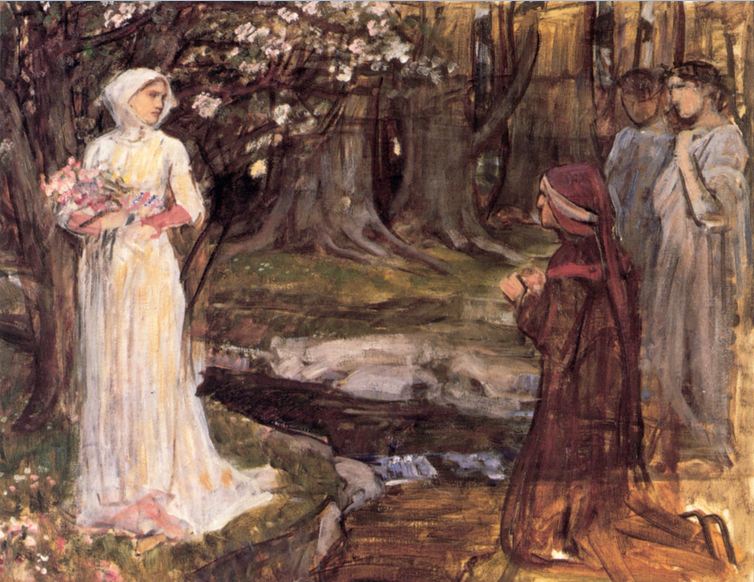 Dante and Beatrice, John William Waterhouse (between 1914 and 1917)
Dante and Beatrice, John William Waterhouse (between 1914 and 1917)
Aquinas’ system gathers in itself all we have treated so far. Dante’s Commedia, which, like the Summa theologiae, is nothing but a complete cosmic conversion and, thus, and only thus, as with Augustine, a personal one, contains even more.
Like the author of Tom Jones, Dante is conscious of being a literary creator. In the dolce stil nuovo he created a Poetic-comic-epic{{47}}[[47]]I am adapting “Prosai-comi-epic” of Fielding.[[47]] in which, as with Fielding and Cervantes, he gave us the “History of the World in general”. Beatrice tells her prisoner, he was so far gone she had to send him all the way to Hell to convert him. She accuses:
He set his steps upon an untrue way, pursuing those false images of good that bring no promise to fulfillment… ‘He sank so low that every instrument for his salvation now fell short except to make him see souls in perdition.’ And so I visited the threshold of the dead and, weeping, offered up my prayers to the one who has conducted him this far.{{48}}[[48]]Purgatorio, XXX, 139-141: “e volse i passi suoi per via non vera, imagini di ben seguendo false, Tanto giù cadde, che tutti argomenti a la salute sua eran già corti, fuor che mostrarli le perdute genti. er questo visitai l’uscio d’i morti e a colui che l’ha qua sù condotto, li prieghi miei, piangendo, furon porti.”[[48]]
“Dì, dì se questo è vero: a tanta accusa/tua confession conviene esser congiunta”. (“Speak, Say whether this is true: to so grave an accusation your confession must be joined”.){{49}}[[49]]Purgatorio XXXI,5-7.[[49]]
Beatrice, thus, in the Adamic Paradise at the top of the Purgatorio’s mountain of repentance before Dante plunges into its two rivers, one of which derives from the Republic’s Myth of Er by way of Virgil’s Aeneid.{{50}}[[50]] Republic, X,621a: εἰς τὸ τῆς Λήθης… τὸν Ἀμέλητα ποταμόν; Aeneid VI,713-15: “Animae, quibus altera fato corpora debentur, Lethaei ad fluminis undam securos latices et longa oblivia potant.”[[50]]
She brings to mind the judgement there and the demands of Philosophia to the prisoner she heals and guides in the Consolation. Beatrice’s demand anticipates Sophia with the penitent Tom and the exigent lady confessors of Jane Austen.{{51}}[[51]]Henry Fielding, Tom Jones, XVIII,12: “Both sat with their eyes cast downwards on the ground, and for some minutes continued in perfect silence. Mr Jones during this interval attempted once or twice to speak, but was absolutely incapable, muttering only, or rather sighing out, some broken words; when Sophia at length, partly out of pity to him, and partly to turn the discourse from the subject which she knew well enough he was endeavouring to open, said— “Sure, sir, you are the most fortunate man in the world in this discovery.” “And can you really, madam, think me so fortunate,” said Jones, sighing, “while I have incurred your displeasure?”—”Nay, sir,” says she, “as to that you best know whether you have deserved it.” “Indeed, madam,” answered he, “you yourself are as well apprized of all my demerits. Mrs Miller hath acquainted you with the whole truth. Tom: “O! my Sophia, am I never to hope for forgiveness?”—”I think, Mr Jones,” said she, “I may almost depend on your own justice, and leave it to yourself to pass sentence on your own conduct.”—”Alas! madam,” answered he, “it is mercy, and not justice, which I implore at your hands. Justice I know must condemn me…”[[51]] Nonetheless, Beatrice and they convert very differently.
 Tom Jones & Sophia Western, from the movie
Tom Jones & Sophia Western, from the movie
It is not so much that their means are very different, and their understanding of the fundamentals of the act of repentance are much the same, but the end is altogether other. Beatrice comes to Dante as the one who particularly moves him by her innocence and beauty of body and soul, but, nonetheless, as also as only one agent in a long chain of mediators including Christ, the Mother of God, and saints above her in the hierarchy. Crucially, as she is moved from above, so also she leads Dante beyond herself. After his repentance is complete, with him already mitred and crowned at the end of his tutelage by Virgil, {{52}}[[52]] Purgatorio XXVII, Virgil: “libero, dritto e sano è tuo arbitrio,e fallo fora non fare a suo senno: per ch’io te sovra te corono e mitrio”[[52]] she will return to her proper place in the Paradiso and he will rise with her. He will not possess her nor she him. Dorothy Sayers writes:
She was thus in fact the vehicle of the Glory—the vessel in which the divine experience was carried—she is, in the allegory, from time to time likened to, or equated with, those other “God-bearers”: the Church, and Divine Grace in the Church; the Blessed Virgin; even Christ Himself. She is the image by which Dante perceives all these, and her function in the poem is to bring him to that state in which he is able to perceive them directly; at the end of the Paradiso the image of Beatrice is—not replaced by, but—taken up into the images, successively, of the Church Triumphant, of Mary, the historic and universal God-bearer, and of God, in whom Image and Reality are one and the same.{{53}}[[53]] Dante, The Divine Comedy I: Hell, trans. Dorothy L. Sayers (Penguin, 1949), 67-68. For another and fuller description of Beatrice in terms of the Masque and the Eucharistic Host, see Dante, The Divine Comedy II: Purgatory, trans. Dorothy L. Sayers (Penguin, 1955), 311-12.[[53]]
 Dante & Beatrice, Gustave Doré
Dante & Beatrice, Gustave Doré
Put differently, coming to her, even to reconciliation with her and with God by her help, is not the end of the journey. There is another whole Cantina, the Paradiso, of contemplation, precisely that which Protestant England rejected when Henry VIIIth dissolved the monasteries, expelled or executed the monks and nuns, refunded the aristocracy, and helped the expansion of the bourgeoisie. Except for some Gothick moments, largely architectural, our secular novelists follow him without regret.
Heaven for them is the future state of reward, whose promise together with the threat of Hell, are used as the ultimate incentives to morality: personal, social, and political order. Heaven’s joys serve the absolutizing of morality, a stance which Nietzsche so convincingly exposed as atheism that their successors recognised themselves in his descriptions and gave up Christian religion and morality both. Heaven is distant and without content; its God hidden. We never enter a substantial spiritual realm or reach out to it. Features of their own society left over from the revolutions in Church and state are forgotten. Not even Jane Austen, buried in Winchester Cathedral, sends us a rumour of scores of Men and Boys choirs in Cathedral, Royal and Collegiate chapels continuing medieval offices. Despite their frightening descriptions of the miseries of most of them, the ultimate present felicity is marriage. Incredible!
/
Conversion in Protestant Secular Romance: Beatrice converts to Protestantism and Marries Dante: Samuel Richardson’s Pamela or Virtue Rewarded (1740)
Tom Jones’ Sophia (1749), the beauty of eternal Wisdom heavenly and incarnate, comes after Richardson’s Pamela (November 1740) and before Austen’s Fanny Price of Mansfield Park (1814). Both of the latter reiterate the kenotic Christ{{54}}[[54]]Philippians 2.8.[[54]] as well as the irresistibly attractive loveliness of Person or Virtue which all share. As such they are the ends of conversion and the means of that, or of damnation. Here, and in the romances of 18th and early 19th century England I shall treat, the ultimate felicity consists in marriage to these descendants, in lineages conscious or unconscious, of Dante’s Beatrice and Plato’s form of Beauty. Flesh and blood marriage to what is heavenly either as the blessed, inspiring, but never possessed, intercessor or as transcendent deity is their “secularization”, as I use this term in this paper, but it means more than this. As we move from Richardson to Fielding and, at the extreme, to Austen, the forms of religion: prayers, sermons, liturgies, theological debates, either disappear or become more and more external to the conversion, or at least to its representation. The operation of Providence is by way of social and psychological forces and religion is hidden, being manifest in these but not alongside them.
Pamela is a fifteen year old universally loved, and irresistibly beautiful, servant in a wealthy and extensive aristocratic household. On the death of her mistress, who added education to her personal beauty, Pamela became the object of first the lust and, then, converted by her, the love of the son and heir. He confesses repeatedly after the conversion that he made what we, and Richardson, understand as the Platonic move from, and by way of, the love of “the Charms of her Person” to “the Graces of her Mind”. After attempting to make her his mistress, and outraged by the impudence of resistance from a minor servant, abducting and imprisoning her, and coming more than once to the physical edge of rape, when he meets with unbreakable, absolutely consistent, and endlessly ingenious resistance, Squire B. transgresses the social boundaries, subdues his pride, and marries her.
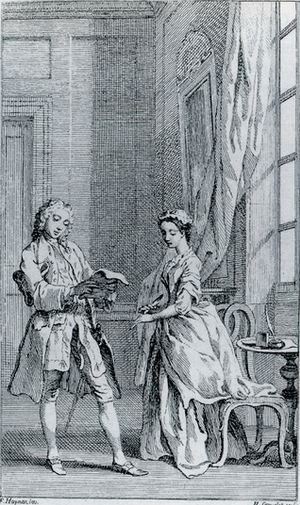 A plate from the 1742 deluxe edition of Richardson’s Pamela, or, Virtue Rewarded showing Mr. B intercepting Pamela’s first letter home to her mother. Original engraving by Hubert Gravelot. via Wikipedia
A plate from the 1742 deluxe edition of Richardson’s Pamela, or, Virtue Rewarded showing Mr. B intercepting Pamela’s first letter home to her mother. Original engraving by Hubert Gravelot. via Wikipedia
Presented as a series of letters, mostly from Pamela to her aged, poor and pious parents from their equally pious daughter, determined to preserve what she calls her “honesty”, the novel is full both of the naive and importunate prayers of one dependent on God’s grace in the terrible exigencies of preserving her virtue against cozening, kidnapping, deceit, and violence, and of the constant self-humiliation and self-blame of the believer. By a deception which belongs to the ceaselessly repeated Augustinian biographical pattern of good brought out of evil, determinative in Pamela, Fielding’s Tom Jones and Amelia, and all the novels of Jane Austen manifesting the government of Providence, Squire B. reads the letters. They enflame his determination to possess their author, not just because her resistance increases her desirability, but also, because, among other reasons, he sees that Pamela’s dutiful prayers for him as her master continue during much of his abuse of her. That a fundamental good will and a love even for him her enemy, and, indeed, her wishing him the ultimate good rules her, is what in the final analysis converts Squire B. The terrible moment for her—terrible because she recognises that she is falling in love with him despite his dreadful abuse and that he might use this to seduce her—and simultaneously the converting moment for him is when she realises that she could not bear to be his accuser on Judgment Day.{{55}}[[55]]Richardson, Pamela, Oxford World’s Classics 2001, pp. 214-216.[[55]] Her love overcomes his evil.
An important character is an unbeneficed young cleric, Williams, entirely dependent on Squire B., who nonetheless courageously attempts to rescue her—though he is more than balanced by established clergy who oppose any resistance to “the powers that be”. Religion is so much present in its own dress, so to speak, that we even go through the moments of the marriage liturgy of our heroine. The novel was recommended and cited from the pulpits of England. As just suggested by my report of Pamela’s Christlike love of her enemy through which the servant converts the master, the turnings where Pamela acts as alter Christus are crucial. I must say a word about those which occur at the crux of Squire B’s conversion.{{56}}[[56]]For another see Pamela, p. 435: “May I, Sir, said I, beg all your Anger on myself, and to be reconciled to your good Sister?”[[56]]
In the final and most serious attempted rape Pamela is held down in cruciform shape on her bed by her master on one side and her jailor on the other. Imprisoned at his remote country estate, she is utterly in the power of “Lucifer in the Shape of my Master”.{{57}}[[57]]Pamela, p. 209.[[57]] “Wicked Man! said I; wicked, abominable Woman!”{{58}}[[58]]Pamela, p. 203.[[58]] In the hands of the wicked, as Jesus is described in the gospel Passion narrative,{{59}}[[59]]E.g. Mark 14.41.[[59]] Pamela cries out to God for death or deliverance. “With Struggling, Fright, Terror” she faints into a fit so deathlike that Squire B. mistakes it for the reality. She is resurrected by his ministrations. His pity aroused, he asks for her forgiveness. Her giving this is his turning. Pamela’s relief brings her to bless God in the words of St Paul, “who, by disabling me in my Faculties, enabled me to preserve my Innocence; and when all my Strength would have signified nothing, magnified himself in my Weakness!”{{60}}[[60]]Pamela, p. 205. 2 Corinthians 12.9.[[60]]Out of the episode Squire B. is brought to confess: “I could curse my Weakness and my Folly, which makes me that I love you beyond all your Sex, and cannot live without you. But if I am Master of myself, and my own Resolution, I will not attempt to force you to anything again.” Nor does he. Pamela’s advice sought by him as to how he might keep his resolution consists in his sending her back to her parents because she had come to “love Poverty.”{{61}}[[61]]Pamela, p. 216.[[61]]
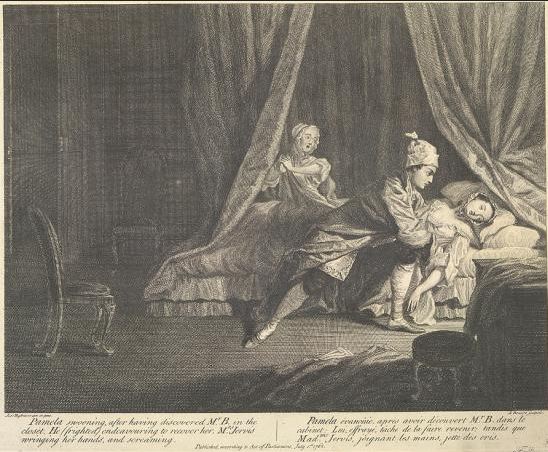 “Pamela swooning after having discovered Mr B in the closet. He (frighted) endeavouring to recover her. Mrs Jervis wringing her hands, and screaming.” From a series of twelve illustrations to Pamela, by Samuel Richardson (1745, 2nd edition). via http://teainateacup.wordpress.com
“Pamela swooning after having discovered Mr B in the closet. He (frighted) endeavouring to recover her. Mrs Jervis wringing her hands, and screaming.” From a series of twelve illustrations to Pamela, by Samuel Richardson (1745, 2nd edition). via http://teainateacup.wordpress.com
/
Tom Jones’ Platonic Sophia: the Learned Henry Fielding supplies the Romantic Philosophy
There is no love of Poverty in Fielding’s Tom Jones, his sense of the ridiculous is too acute to endure the piety of Pamela for hundreds of pages, and his determination to be true to nature prevents snow white characters. Indeed, Fielding is explicit that theologically, morally, dramatically, and essential to his new genre, the heroic figures in Tom Jones must have flaws, their characters must be mixed.{{62}}[[62]]Tom Jones, X,ii,XI,ii, XII,viii.[[62]] Nonetheless, the most learned of our romancers, Fielding, depicts his paradigmatic heroine though the notion of the naked vision of a Platonic form. We are told that one might almost say “Her Body thought”; “Her Mind was every way equal to her Person; nay the latter borrowed some Charms from the former”.{{63}}[[63]]Tom Jones, IV,ii.[[63]] Indeed, her virtue of mind so shines through her beauty that Tom, her true lover, is converted, not from lust for her, but to complete fidelity; his lust is for others.{{64}}[[64]]Sophia is attracted to Tom before he has any particular “Design” on her Tom Jones, IV,vii. She manifests her attraction first. This disturbs him. Tom Jones, V,ii: “He extremely liked her Person, no less admired her accomplishments, and tenderly loved her Goodness. In Reality, as he had never once entertained any thought of possessing her, nor had ever given the least voluntary Indulgence to his Inclinations, he had a much stronger Passion for her than he himself was acquainted with. His Heart now brought forth the full Secret, at the same Time that it assured him the adorable Object returned his Affection.”[[64]] His rival Blifil moves in the opposite way. As his aversion to Sophia increased, so did his lust. Aversion “served rather to heighten the Pleasure he proposed in rifling her Charms, as it added Triumph to Lust.”{{65}}[[65]]Tom Jones, VII,vi and see XVI,vi.[[65]] Thus, Sophia too is subjected to schemes for rape made by the aristocrat cousin, Lady Bellaston, to whom she has fled for refuge, and by her father, proposing that his chosen mate for her, Blifil, use force.
On the road, Sophia is so “distracted between Hope and Fear, her Duty and Love to her Father, her Hatred to Blifil, her Compassion and … her Love for Jones…that her Mind was in that confused State which may be truly said to make us ignorant of what we do, or whither we go, or rather indeed indifferent as to the Consequence of either.”{{66}}[[66]]Tom Jones, X,ix.[[66]] In London, at the mansion of Bellaston, who is maintaining Tom as her amour, carefully keeping the true lovers apart, Sophia encounters Tom by accident. She first views herself and him through a mirror. In their conversation Sophia asks: “Can every Thing noble and every Thing base, be lodged together in the same Bosom?”{{67}}[[67]]Tom Jones, XIII,xi.[[67]] Nonetheless, when Tom formally proposes Marriage, she accepts. Almost immediately after, they are discovered by Lady Bellaston and an intercourse between Tom, Bellaston, and herself ensues during which all three conceal truths known or suspected by the others. Sophia self-consciously enters the mirror world of appearances and reluctantly teaches herself the “Practice of Deceit”.{{68}}[[68]]Tom Jones, XIII,xii. This is not the first time Wisdom deceives; at VI,iii she ignores Tom and pays special attention to Blifil in order to hide the true state of her affections, and at XI,viii, and elsewhere, she leaves Tom out of her account of her reasons for fleeing her father. However, XIII,xii is the first time she is represented as seriously remorseful.[[68]] So totally is Wisdom made earthly. The union of the heavenly pattern with the flawed earthly is the heart of the understanding of which Fielding aims to persuade us. Writing of “Platonic Affection which is absolutely detached from the flesh”, he reports: “I cannot pretend to say, I have ever seen an instance of it.”{{69}}[[69]]Tom Jones, XVI,v.[[69]]
Fielding’s relation to Richardson’s Pamela is ambiguous. Praise from the pulpit was matched by criticisms so serious that Richardson revised the text several times. Some were distressed by its sexual explicitness and thought it encouraged licence, some correctly saw its depiction of the violent misuse of power by an aristocrat, the compliance of the authorities, civil and ecclesiastical, and his marriage to a house maid to be destructive of respect for the social order. Fielding instead savagely and profitably sent up its moralistic pedantry in An Apology for the Life of Mrs Shamela Andrews (April 1741), a parody or “burlesque”, which appeared less than six months after it. In The History of the Adventures of Joseph Andrews and of his Friend Mr. Abraham Adams which came out less than a year later (February 1742), he adopts a more positive form, the comic prose epic. This he regards as his proper genre, “I am, in reality, the Founder of a new Province of Writing”,{{70}}[[70]]Tom Jones, II,i.[[70]] “Prosai-comi-epic”{{71}}[[71]]Tom Jones, V,i.[[71]]. Despite the contrast with Dante’s Poetic-comic-epic, Fielding and our other authors are probably too Enlightened to have known much of Dante. William Blake, a contemporary of Jane Austen was reviving Dante but he too was then unknown. In any case Fielding sets out to perfect his new province in Tom Jones. Certainly elements of the burlesque remain, but Fielding distinguishes the comic and satirical from it. Joseph Andrews both borrows much from and satirizes Pamela.
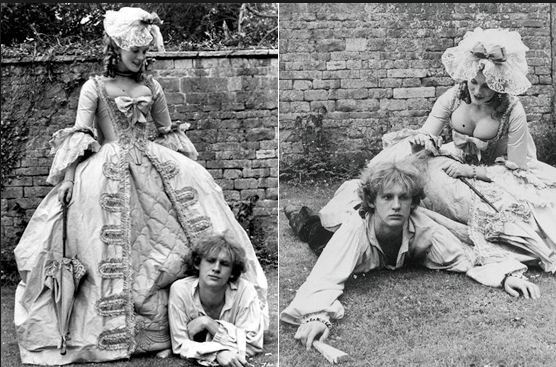 Joseph Andrews and Lady Booby, from the movie
Joseph Andrews and Lady Booby, from the movie
Fielding explicitly places Joseph Andrews against Pamela as the demonstration that a male can also be virtuous. Indeed, although “Andrews” is borrowed from Richardson’s novel, “Joseph”, the Biblical figure, who, at great cost and greater risk, preserved his chastity against Potiphar’s wife, is borrowed from Genesis and from a sermon of the great Latitudinarian divine Isaac Barrow.{{72}}[[72]]See Martin C. Battestin, The Moral Basis of Fielding’s Art: A Study of Joseph Andrews (Middleton, Conn.: Wesleyan University Press, 1959). [[72]] At Cambridge, Regius Professor of Greek, then Lucasian Professor of Mathematics, then Master of Trinity, this Platonist we may call Fielding’s theologian. Abraham, as the counterpoint of Joseph’s “virtue and integrity”, from the same sermon by Barrow, has the charity and beneficence of Parson Abraham Adams of his earlier and shorter “Prosai-comi-epic”. This characterizes Tom Jones, whose universally beneficent good nature makes him repeatedly and habitually charitable according to Squire Allworthy’s definition: “giving what even our own Necessities cannot well spare”.{{73}}[[73]]Tom Jones, II,vi.[[73]]Unfortunately in Tom it goes with “a blameworthy Want of Caution, and Diffidence to the Veracity of others, in which he was highly worthy of Censure.”{{74}}[[74]]Tom Jones, VIII,vii.[[74]] His extraordinary natural beauty, like his too trusting nature, match the same qualities in Sophia. Tom is described as an “Angel”,{{75}}[[75]]Tom Jones, IX,ii.[[75]] as “Adonis”, and even as uniting that delicate beauty with Heraclean masculinity.{{76}}[[76]]Tom Jones, VIII,iv; Tom Jones, XV,vii, Tom Jones, IX,v: “a most masculine Person and Mein; which latter had as much in them of the Heracles, as the former [his face] had of Adonis.” And XVIII,xii.[[76]] Given his lack of chastity, this is as much a destructive snare for him as an attraction for others.
It is his active, spontaneous and habitual charity which brings him the friends who save him from the hanging for which it had been the “universal Opinion of all Mr. Allworthy’s Family” he was born.{{77}}[[77]]Tom Jones, III,ii. Parson Thwackum was firm in this conviction Tom Jones, V,ii. He is represented as a Calvinist predestinarian simultaneously sure of Tom’s “State of Reprobacy” and exercising his “Duty, however, to exhort you to…Repentance, tho’ I too well know all Exhortations will be vain and fruitless.” The wicked Captain Blifil is given the same kinds of doctrines, but, in him they are ascribed to Methodism (I,x) which his “Rascal” son will adopt. The two are united for Fielding in the evangelist George Whitefield (see Battestin’s note at I,x). Parson Abraham Adams of Joseph Andrews, and of the conclusion of Tom Jones, is the determined enemy of both the movement and the doctrines. For Fielding’s Tom Jones as set up to oppose this logic and its opposite, see XII,viii.[[77]] We may say, then, that the problematic of the plot of Fielding’s later prose epic comedy is set already in the first: the conversion of Tom to the chastity of Joseph{{78}}[[78]]Allworthy to Tom, Tom Jones, V,vii: “I am convinced, my Child, that you have much Goodness, Generosity and Honor in your Temper; if you will add Prudence and Religion to these, you must be happy: For the three former Qualities, I admit, make you worthy of Happiness, but they are the latter only which will put you in Possession of it.”[[78]] through the joint influence of the paradigmatic Sophia and Allworthy. Both of them are as great Patterns of Wisdom as of Goodness.{{79}}[[79]]So Allworthy is described at Tom Jones, VI,iv. Allworthy is the man to pull Tom together. He “was naturally a Man of Spirit, and his present Gravity arose from true Wisdom and Philosophy, not from any original Phlegm in his Disposition: For he had possessed much fire in his Youth, and had married a beautiful woman for Love.” VI.iv.[[79]] Allworthy also is heavenly: “Heaven only can know him, can know that Benevolence which it copied from itself, and sent upon Earth as its own Pattern.”{{80}}[[80]]Tom Jones, VIII,ii.[[80]] But though, like Sophia, he is irresistible,{{81}}[[81]]Tom Jones, XVIII,ix: Western complains you “make me always do just as you please”.[[81]] Allworthy is also fallible and is frequently deceived,{{82}}[[82]]E.g. most importantly at Tom Jones, VI,xi.[[82]] and when Tom’s reconciling full confession is made to him, it is in response to his own admission of, and repentance for, his blameworthy faults.{{83}}[[83]]Tom Jones, XVIII,x.[[83]]
Be that as it may, the earlier of Fielding’s two comic epics of the road, depicts the resistance of Joseph Andrews, the brother of Pamela, to the sexual depredations of Squire Booby’s aunt, Potiphar’s wife updated. Nonetheless, the telos of Joseph Andrews is the reward of its heroes’ virtue by marriage to the beautiful, caste, and innocent Fanny to whom he has been faithful, and Lady Booby is sentenced to infinite boredom and degradation in the debauched high life of London, Fielding’s Hell. From both his satire of Pamela, and his mocking exploitative mirroring, Fielding took over positively, or by critical opposition, still more elements into Tom Jones: an uncompromising exposure of hypocrisy, especially sexual, the preservation of social rank and a strictness about the rights and limits of paternal authority,{{84}}[[84]]Although Sophia resists and flees the wrong exercise of he father’s authority, and is supported against it by Allworthy, Squire Western is permitted to do what he must as her father at the critical point when he saves her from imminent rape, Tom Jones, XV,v. In the end she does marry the man he wishes for her (though his mind has been changed), his bloody minded opposition to Tom is allowed to be forgiven because “I took thee for another Person” (XVIII,x), and Sophia (very willingly we suppose) yields to him on the date of the wedding (XVIII,xii).[[84]] elements of the converting heroine, marriage as telos and felicity, the Parson Abraham Adams, and the imitation of Cervantes’ Don Quixote, whose Sancho Panza, under the form of Partidge, and very much else, appear in Fielding’s masterpiece.
In the sillage of what he called Cervantes’ “History of the World in general”{{85}}[[85]]Joseph Andrews, III.i.[[85]] Fielding tells us that The History of Tom Jones is a “great creation of our own” in form and content.{{86}}[[86]]Tom Jones, X,i.[[86]] The critic is warned “not too hastily to condemn any of the Incidents in this our History, as impertinent and foreign to our main Design, because thou dost not immediately conceive in what Manner such Incident may conduce to that Design.” Martin Battestin rightly adduces Cudworth’s The True Intellectual System of the Universe (1678) with its comparison between a poem and the universe taken from Plotinus.{{87}}[[87]]Ibid.[[87]] Fielding goes on from this to justify his characterization according to types and, later, will designate Experience of all social classes, along with Genius, Humanity, and Learning as necessary to his comic prose epics because they need knowledge of “the Manners of Mankind.”{{88}}[[88]]Tom Jones, XIII,i.[[88]] The plenitude of Fielding’s Great Chain of Being is more than social. It reaches around the globe and up and down the hierarchy from the divine to “Insects and Vegetables”.{{89}}[[89]]Tom Jones, XV,i.[[89]] Sophia is Tom’s “goddess”{{90}}[[90]]Tom Jones, IV,xiv.[[90]], with a “heavenly Temper…[and] divine Goodness”,{{91}}[[91]]Tom Jones, V,vi[[91]] he ascribes to her “all that we believe of Heaven”.{{92}}[[92]]Tom Jones, VIII,ii.[[92]] In the final chapter of the work, she is described as sitting among the other brides “Like a Queen receiving homage, or rather like a superior Being receiving Adoration from all around her”, and she helps conclude the work by a rain of graces procured by her “Mediation” or “Instance”.{{93}}[[93]]Tom Jones, XVIII,xiii.[[93]]
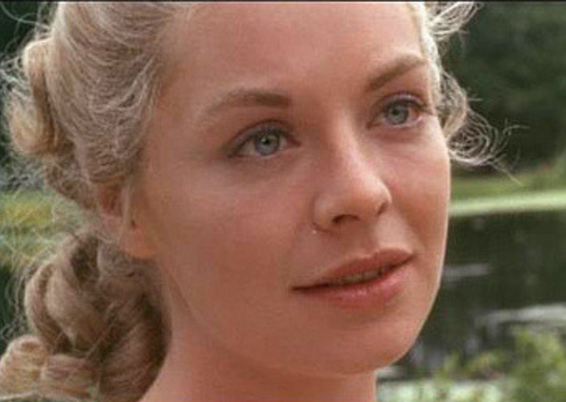 Sophia Western (Susannah York), from the movie
Sophia Western (Susannah York), from the movie
However, lest we mistake her either for Dante’s Beatrice or Richardson’s Pamela, at the point when, owing to her “very deep sense of Religion”, she contemplates, with “an agreeable Tickling”, the thought of making herself “a Martyr to filial Love and Duty” by marrying the hated Blifil, Fielding remains faithful to his principles. He will stray neither from his Latitudinarian theology to a predestination of pure characters, nor from the plenitude of his comic epic with all sorts and conditions and their flaws as well as its own.{{94}}[[94]]Tom Jones, XI,i[[94]] As to the former:
Sophia was charmed with the Contemplation of so heroic an Action, and began to compliment herself with much premature Flattery, when Cupid …like Punchinello in a Puppet-shew, kicked all out before him. In Truth (for we scorn to deceive our Reader, or to vindicate the Character of our Heroine, by ascribing her Actions to supernatural Impulse), the Thoughts of her beloved Jones and some Hopes… in which he was very particularly concerned, immediately destroyed all which filial Love, Piety and Pride, had, with their joint Endeavours, been labouring to bring about.{{95}}[[95]]Tom Jones VII,ix.[[95]]
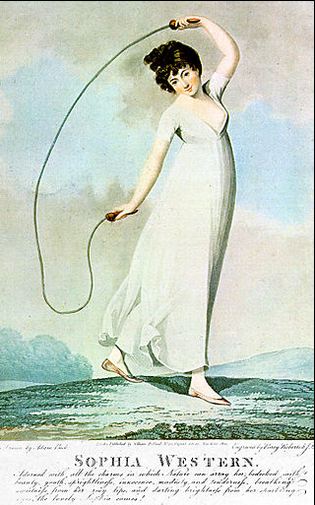 “Adorned with all the charms in which Nature can array her, bedecked with beauty, youth, sprightliness, innocence, modesty and tenderness, breathing sweetness from her rosy lips and darting brightness from her sparkling eyes, the lovely Sophia comes!”
“Adorned with all the charms in which Nature can array her, bedecked with beauty, youth, sprightliness, innocence, modesty and tenderness, breathing sweetness from her rosy lips and darting brightness from her sparkling eyes, the lovely Sophia comes!”
Time does not permit us to follow the whole process of Tom’s conversion. The comic journey begins when Sophia’s love and hopes, her hatred of Blifil, and the terrifying prospect of being forcibly married to someone whose passions for her are a mixture of greed, hatred, and lust induces her to flee her father and seek refuge with Lady Bellaston in London. Along the way, on discovering the path Tom was taking, she sets out to pursue him.{{96}}[[96]]Tom Jones, X,ix.[[96]] Tom, in disgrace with Allworthy and in flight from Sophia’s father, finds, in the discovery of her pocket book she lost on her journey, the excuse he desires to follow her there. On the journey, and in London, where he becomes the kept man of Bellaston (“nor do I pretend to the Gift of Chastity”),{{97}}[[97]]Tom Jones, XIV,iv.[[97]] the two sides of his personality,{{98}}[[98]]Tom Jones, III,v: “a thoughtless, giddy Youth”.[[98]] his “naturally violent animal Spirits”,{{99}}[[99]]Tom Jones, V,ix.[[99]] and his universal beneficence,{{100}}[[100]]Tom Jones, XV,viii where Terence’s most famous dictum is applied to him. And we have Tom on himself: “tho’ I have been a very wild young fellow, still in my most serious Moments, and at the Bottom, I am really a Christian.” Tom Jones, VII,xiii. His are the “Faults of Wildness and of Youth” XVII,ii[[100]] have the space and opportunity to develop their opposition. He ends up in prison likely to be hanged for murder. There he is cast off by Sophia who has learned of his services to Bellaston and is deceived into thinking Tom has proposed marriage to his mistress. Worst of all Tom becomes convinced that he missed meeting Sophia when they were on the road together because he was “a-Bed” with his own mother!{{101}}[[101]]Tom Jones, XVIII,ii.[[101]] On hearing this Tom repents, crying out:
Fortune will never have done with me, till she hath driven me to Distraction. But why do I blame Fortune? I am myself the Cause of all my Misery. All the dreadful Mischiefs which have befallen me, are the Consequences only of my own Folly and Vice.”…He then fell into the most violent and frantic Agonies of Grief and Despair.{{102}}[[102]]Ibid.[[102]]
Later, when released and welcomed by Allworthy, at this point known to be his uncle, Tom will make a full confession in due form with all the proper moments of sorting out what his sins were, taking responsibility, discerning the roots of each fault, and expressing his contrition with a promise of amendment of life.{{103}}[[103]]Tom Jones, XVIII,x.[[103]]
After the exclamation just recorded, the omniscient author assures us that it is not Fortune but the same governance ruling his comedy and the universe which has brought Tom to this complete mortification: “Instances of this Kind we may frequently observe in Life, where the greatest Events are produced by a nice Train of little Circumstances.”{{104}}[[104]]Tom Jones, XVIII,ii.[[104]] The nice train of circumstances is already moving things in the other direction. Tom’s charity and basic goodness have won him friends who are well at work to clear him of the false charges and to release him from his mistaken notion of being incestuous. Fielding gives the operative law: “The Good or Evil we confer in others, very often…recoils on ourselves.”{{105}}[[105]]Tom Jones, XIV,vii.[[105]]
 Sophia Western (Susannah York) and Tom Jones (Albert Finney) in the movie
Sophia Western (Susannah York) and Tom Jones (Albert Finney) in the movie
Providence exposes as rascals those who betrayed him and Sophia, according to the repeated dictum of Squire Allworthy: “Good Heavens, by what wonderful Means is the blackest and deepest Villany sometimes discovered.”{{106}}[[106]]Tom Jones, XVIII,vii & XVIII,viii.[[106]] Tom changes places with Blifil, as nephew and heir, who turns “Methodist”.{{107}}[[107]]Tom Jones, XVIII,xiii.[[107]] Mrs Honour, Sophia’s maid who went over to Bellaston is known to be “Honour Blackmore”,{{108}}[[108]]Tom Jones, XV,x.[[108]] and traitorously ready to testify whatever Bellaston pleased.{{109}}[[109]]Tom Jones, XVI,viii, XVIII,xi, and XVII, viii.[[109]] Black George, who betrayed Tom’s charity is seen to have “a most remarkable Beard, the largest and blackest”, his robbery is uncovered and he disappears into oblivion, where Mrs Honour has already preceded him. {{110}}[[110]]Tom Jones, XII,xii and XVIII,xiii.[[110]]
Tom and Sophia marry on Christmas Eve{{111}}[[111]]See note to Tom Jones, VIII,ix.[[111]] and move into her father’s mansion given up for them. They are neighbours to “Paradise Hall”, Allworthy’s noble “Gothick” house. To which they will succeed. There Allworthy has taken in Mr. Abraham Adams, who Sophia declares “shall have the Tuition of her Children.’{{112}}[[112]]Tom Jones, XVIII,xiii.[[112]] Tom’s tendency to Vice is corrected by “continual Conversation with” Allworthy “and by his Union with the lovely and virtuous Sophia.” We are assured that “He hath also, by Reflexion on his past Follies, acquired a Discretion and Prudence very uncommon in one of his lively parts.”{{113}}[[113]]Tom Jones, XVIII,xiii.[[113]]
/
Conversion in Jane Austen’s Novels: Secularization Completed and the Beginnings of a Critique{{114}}[[114]]My treatment of Jane Austen’s novels has been encouraged and assisted by Paul Epstein, “‘Is Sex Necessary’: Friendship and Marriage in Jane Austen’s Emma’,” and Susan Harris’ response to Dr Epstein’s paper in Christian Friendship. Papers delivered at the Twenty-Fifth Annual Atlantic Theological Conference, June 26th to 29th, 2005, edited Susan Harris (Charlottetown: St Peter Publications, 2005), 173-192 and 193-199.[[114]]
Mary Crawford: “‘A clergyman is nothing’.” Edmund: “‘The nothing of conversation has its gradations, I hope, as well as the never. A clergyman cannot be high in state or fashion. He must not head mobs, or set the ton in dress. But I cannot call that situation nothing which has the charge of all that is of the first importance to mankind individually or collectively considered, temporally and eternally, which has the guardianship of religion and morals, and consequently of the manners which result from their influence. No one here can call the office nothing….[I]t is not in fine preaching only that a good clergyman will be useful in his parish and neighbourhood, where the parish and neighbourhood are of a size capable of knowing his private character, and observing his general conduct…And with regard to their influencing public manners, Miss Crawford must not misunderstand me, or suppose I mean to call them the arbiters of good breeding, the regulators of refinement and courtesy, the masters of the ceremonies of life. The manners I speak of might rather be called conduct, perhaps the result of good principles; the effect, in short, of those doctrines which it is their duty to teach and recommend; and it will, I believe, be everywhere found, that as the clergy are, or are not what they ought to be, so are the rest of the nation.’ ‘Certainly,’ said Fanny, with gentle earnestness” (Mansfield Park).
In contrast to the readers of Richardson’s Pamela or of Smollett’s The Expedition of Humphry Clinker (1771), or of Fielding’s Joseph Andrews (1742), Shamela (1741), Tom Jones (1749) and Amelia (1751), those who are blessed enough to read through all six of Jane Austen’s novels will be spared ever attending a liturgy or hearing a prayer (as in Pamela) or repetitions of the words and doctrines of the Book of Common Prayer (as in Tom Jones{{115}}[[115]]Tom Jones, I,xii gives us the Book of Common Prayer on Matrimony and at V,ii the same on the Visitation of the Sick.[[115]]). They will never listen to a sermon{{116}}[[116]]Mansfield Park, ix, Mary and Edward disputing about whether a clergyman is nothing are agreed that sermons are pretty much ineffectual, what is needed is “a clergyman constantly resident” as “well-wisher and friend.”[[116]] and only very very rarely witness one being read.{{117}}[[117]]Except, very briefly, when the ridiculous Mr Collins attempts to read to Mrs Bennett and her daughters in Pride and Prejudice,[New York: Pantheon Books, nd]xiv and is rudely interrupted and thus silenced by Lydia, and when Lady Bertram cries herself to sleep after having heard “an affecting sermon” read to her, Mansfield Park, xlvii[[117]] Reading a sermon will convert no one (as in Amelia), and in none of Austen’s novels will a clergyman function as a saving hero (as Williams, Adams and Harrison do, or attempt to do, in Pamela, Joseph Andrews, Amelia respectively). Importantly for my thesis, a discourse compared to preaching is that of a female character heartening a man and reflecting that she is in need of her own advice.{{118}}[[118]]Persuasion, xi,101: “When the evening was over, Anne could not but be amused at the idea of her coming to Lyme to preach patience and resignation to a young man whom she had never seen before; nor could she help fearing, on more serious reflection, that, like many other great moralists and preachers, she had been eloquent on a point in which her own conduct would ill bear examination.” I owe this point to Elizabeth King.[[118]] There are no lengthy theological debates to be read (as in Joseph Andrews, Tom Jones). The villains are neither Methodists nor on the way to becoming one (as in Joseph Andrews, Tom Jones). No references to Latitudinarian Divines are required to understand substantial debates about nature and grace, predestination and freewill, philosophy and revelation, and the nature of charity (as in Joseph Andrews, Tom Jones, Amelia).
The clergy are present in abundance and their characters vary from the ridiculous, gluttonous{{119}}[[119]]Dr Grant, after becoming a Prebendary of Westminster Abbey, “brought on apoplexy and death by three great institutionary dinners in one week.” Mansfield Park, xlviii[[119]], greedy and manipulative (Pride and Prejudice (1813), Mansfield Park, Emma (1816)) to the husbands of three of her six principal heroines, but two of these are rather weak, shy, and passive partners of their impoverished brides (Edmund and Edward in Mansfield Park and Sense and Sensibility (1811) respectively). These beneficed husbands are pluralist servants of the social hierarchy provided with livings by their friends or families.{{120}}[[120]]Especially clear in Sense and Sensibility, [New York: Pantheon Books, nd]xxxixand Mansfield Park, xlviii: “the acquisition of Mansfield living”. Edward we are assured showed his contentment with his small living by “the ready discharge of his duties in every particular” (Sense and Sensibility, xxxix)—the wonder is that it should need remarking upon. Henry Tilney of Northanger Abbey(1818) [New York: Pantheon Books, nd] is strong and has defied his father, the tyrannical General, to his face to be faithful to Catherine, xxx, p. 232. He employs a curate to do the ordinary pastoral work while he enjoys the parsonage and the greater part of the income of the living (Chapters xxvi & xxviii,205). Tongue firmly in cheek, Mr Bennet advises the sycophantic and ambitious Mr Collins to shift from Lady Catherine to her nephew: “he has more to give” Pride and Prejudice, lx,380. In Pride and Prejudice, pastoral charges are treated as sources of income and the right to appoint to them (present them) is a commercial matter. See also Sense and Sensibility, xli where Elinor’s brother cannot believe that the living is really being given rather than sold. Neither Sir Walter Elliot nor his second daughter regard a curate as a gentleman, Persuasion, [New York: Pantheon Books, nd] iii,22. Jane Austen has nothing of Fielding’s zeal both to better the lot of the poorer clergy—many of his worse off characters are the children of clergy who ridiculously regard themselves as gentry on that account (e.g. Black George’s wife and Honour Blackmore), and to inspire a spirit of independence vis-à-vis their patrons.[[120]] The authoress daughter of a clergyman makes none of hers heroic resisters of powerful evil doers in the manner of Mr Williams, Mr Adams and Dr Harrison.
Yet we are not witnessing the loss of conversion in the Christian Platonist tradition but rather such a complete passage into the processes of social and individual life, i.e. secularization, that religious forms need not be represented along side them. Jane Austen is a modern Sophocles in his difference from Euripides and Aeschylus. Indeed, there is a sense in which her novels are the deepest treatments of conversion in the genre. Two other differences from her predecessors in her representation of conversion, as well as an important difference of style and domain are notable.

I begin with the last. Jane Austen’s romances are in the tradition of and dependent upon those we have treated, but the contrast to all of them and especially to Tom Jones is striking. In opposition to Pamela, The Adventures of Humphry Clinker, Joseph Andrews, Shamela, and Tom Jones, there are neither speeches in dialect nor the amusingly misspelled letters of servants. In fact, we never enter the world of the servants at all and we have none of Fielding’s learning: no Latin tags, neither references to Plato and the Stoics nor to modern rationalist philosophers, no Horace or Ovid, not even Homer. We have nothing of Fielding’s “great creation” and the determination to exhibit the plenitude of the social chain of being. Indeed, although Darcy in Pride and Prejudice must come to recognize that people in trade can have the virtues associated with the gentry, and Sir Walter Elliot and Lady Russell (Persuasion(1818)) must be educated to some respect for naval captains and admirals, Austen generally keeps people within their different social spheres: Emma sins in trying to raise a bastard daughter into the respectable gentry—which, after all is said and done, is the boundary Tom Jones transgresses. The rascals in Pride and Prejudice and Persuasion (Wickham and Mrs Clay, respectively) are the son and the daughter of stewards of the estates, who, from too easy mixing with their betters, acquired ambitions and expectations beyond their places.{{121}}[[121]]At Pride and Prejudice, lvi: Lady Catherine de Bourgh: “…is the son of his late father’s stewart, to be his brother? Heaven and Earth—of what are you thinking? Are the shades of Pemberley to be thus polluted?” However, Darcy does transgress this boundary in marrying Elizabeth.[[121]] Certainly there is nothing approaching Pamela’s leap from the servant’s hall to becoming Lady Booby which so scandalised Richardson’s readers and provoked the imitations and mockeries of Fielding and Smollett. Instead of a great chain of social being, depicted in all its ridiculous contrasts and tyrannies so as to be enjoyed and transgressed, Jane Austen’s world, except for the navy, is almost entirely the small one of the country gentry and those with pretensions for it, or falling out of it. She seems not to have liked the titled aristocracy any more than her predecessor authors did, and the town, as for them, is the picture and reality of hell and damnation. Her power, and none had it in greater measure, was for the close ironic observation, and epigrammatical description, of the psyches which constitute it and of their inner and social movements. Heaven and Hell in a handful of dust. In exchange for the smallness of her world, we are admitted to sometimes terrible intimacies of the spirit unopened by her predecessors.
As to the two differences of her heroines, first, Jane Austen’s are not exemplars of the irresistible beauty which animates the conversion of the lovers of Pamela and Sophia. Second, although Austen has heroines whose virtue is perfect from the beginning and fix the stable centre around and towards which conversion takes place (thus, Elinor in Sense and Sensibility and Fanny in Mansfield Park), she is just as likely, and more interestingly I judge, to have heroes and heroines who undergo conversion which is mutual. Thus, outstandingly, Elizabeth and Darcy in Pride and Prejudice, Emma and Mr Knightly in Emma, and Anne and Frederick in Persuasion. Darcy, Knightly, and Anne{{122}}[[122]]Persuasion, xxii, p. 226: (Anne speaks) “I am not yet so much changed”, xxiii, 244: “the resolution of a collected mind”, xxiii, 245: (Wentworth speaks) “You could never alter.” In fact, she has changed, but by the time of the action of the novel her sufferings and self-exertions have given her the habit Frederick admires. It shows itself above all when she alone knows how to act, and does it from the spontaneity of virtue, when Louisa jumps and falls. In contrast Frederick Wentworth and the other men are helpless. Persuasion, xii, pp. 109-110: “’Is there no one to help me? were the first words which burst from Captain Wentworth, in a tone of despair, and as if all his own strength were gone. ‘Go to him, go to him,’ cried Anne, ‘for heaven’s sake go to him. I can support her myself…’ Anne, attending with all the strength, and zeal, and thought, which instinct supplied…tried to quiet Mary, to animate Charles, to assuage the feelings of Captain Wentworth. Both seemed to look to her for direction.” I am grateful to Elizabeth King for reminding me of the change in Anne.[[122]] are the stable fixed centres of true judgment{{123}}[[123]]Pride and Prejudice, vi where Darcy has already formed the right judgment of Elizabeth that will motive him, despite himself, his family and friends, and her family: Elizabeth was “becoming an object of interest”; “no sooner had he made it clear to himself and his friends that she had hardly a good feature in her face, than he began to find it rendered uncommonly intelligent by the beautiful expression of her dark eyes…he was forced to acknowledge her figure to be light and pleasing”. He is compelled to repent his first hasty judgment. By chapter x “Darcy had never been so bewitched by any woman as he was by her.” In contrast, Liz’s aunt Gardiner must warn her about becoming further attached to the rascal Wickham (xxv) and in Chapter xxvi she confesses that he “must always be her model of the amiable and pleasing”. Liz is rescued by his forsaking her for someone with money. It is not until her visit to Pemberley (xliii) and its consequences that Elizabeth begins to understand Darcy and her love for him. Throughout it all, once fixed, Darcy is able to say “My affections and wishes are unchanged” (lviii). And Elizabeth declares to Wickham: “In essentials, I believe, he is very much as he ever was.” (xli).[[123]], as Brandon, Marianne’s true lover, is in Sense and Sensibility. Because I think these two characteristics of her heroines taken together may help expose what is most intensely Christian in her depictions, I elaborate them slightly.
The union of beauty, goodness, and wisdom in Dante’s Beatrice, Pamela, Joseph Andrews, and Tom Jones has disappeared. Jane Austen has no ugly heroines but they may, at some points in their lives in her stories, be judged “plain” (thus, Anne, Fanny, and Catherine in Persuasion, Mansfield Park, and Northanger Abbey, although all three will come to be regarded as attractively beautiful or at least “pretty” (Catherine){{124}}[[124]]Northanger Abbey, ii. Henry Tilney “had a pleasing countenance, a very intelligent and lively eye, and, if not quite handsome, was very near it.” (iii).[[124]]). Even more telling is that her great beauties, male and female, have faults or worse. Thus, Jane in Pride and Prejudice is endlessly charitable through refusing to discriminate,{{125}}[[125]]Elizabeth on Jane, Pride and Prejudice, iv:”Oh! you are a great deal too apt, you know, to like people in general. You never see a fault in anybody. All the world are good and agreeable in your eyes.” At xxvi Jane reveals how this is self-serving: “But I will endeavour to banish every painful thought, and think only of what will make me happy…” In contrast Elizabeth comes to be ashamed of her too quick and too harsh judgments, especially of Darcy.[[125]] and Marianne in Sense and Sensibility{{126}}[[126]]Marianne is described in Sense and Sensibility at the beginning of Chapter x. Elinor is in her shadow for appearance: “her face was so lovely” as to make her more than a “beautiful girl”; “her complexion was uncommonly brilliant”, etc.[[126]] has a self-destructive and selfish romantic sensibility; significantly, they are both the favourites of their mothers. Willoughby, who will nearly destroy Marianne and does destroy others, has “manly beauty and more than common gracefulness.”{{127}}[[127]]Sense and Sensibility, ix. In contrast Marianne says of Edward “his figure is not striking—it has none of the grace which I should expect in the man who could seriously attach my sister.” (iii).[[127]] Wickham, the villain of Pride and Prejudice, is judged more handsome than the hero Darcy,{{128}}[[128]]Pride and Prejudice, xliv: “‘To be sure Lizzy,’ said her aunt, ‘he is not so handsome as Wickham; or rather, he has not Wickham’s countenance, for his features are perfectly good.’”[[128]] has an “appearance greatly in his favour; he had all the great part of beauty, a fine countenance, a good figure, and very pleasing address.” {{129}}[[129]]Pride and Prejudice, xv. At xvi: “Elizabeth honoured him for such feelings, and thought him handsomer than ever as he expressed them.”…She thought: “A young man, too, like you, whose very countenance may vouch for your being amiable” When wrongly believing him as opposed to Darcy, Elizabeth gives as a reason: “Besides, there was truth in his looks.”(xvii). Again, at xxxvi: “As to his real character, had information been in her power, she had never felt a wish of inquiring. His countenance, voice, and manner had established him at once in the possession of every virtue.”[[129]] Worse, the more he lies the more handsome he seems. Darcy, though a “fine, tall person,” with “handsome features, noble mien” has disgustingly proud manners.{{130}}[[130]]Pride and Prejudice, iii: “Mr. Darcy soon drew the attention of the room by his fine, tall person, handsome features, noble mien, and the report which was in general circulation within five minutes after his entrance, of his having ten thousand a year. The gentlemen pronounced him to be a fine figure of a man, the ladies declared he was much handsomer than Mr. Bingley, and he was looked at with great admiration for about half the evening, till his manners gave a disgust which turned the tide of his popularity; for he was discovered to be proud; to be above his company, and above being pleased; and not all his large estate in Derbyshire could then save him from having a most forbidding, disagreeable countenance, and being unworthy to be compared with his friend.”[[130]] Mary Crawford, close to being a female villain, is “remarkably pretty” and she, and her even more destructive brother, are “of very prepossessing appearance”.{{131}}[[131]]Mansfield Park, iv.[[131]]

What attracts in Anne, Fanny, Elinor, and Catherine is virtue which makes them standards of judgement when others err or are incapable of action, even if, in the case of Catherine, this is only an incorruptible and naïvely trusting innocence. They are stable poles of judgement rather than of physical beauty.{{132}}[[132]]Thus, of Fanny, from her rejected suitor, Henry Crawford, who by losing her damns himself and those he implicates: “Your judgment is my rule of right.” Mansfield Park, xlii. Her judgment and perseverance in it prove to be truer and stronger than that both of Edmund, the right principled clergyman she marries, who gave her guidance when she was younger, and of Sir Thomas Bertram, the admirable but erring pater familias. Naïve Catherine of Northanger Abbey is nonetheless of sure and unmovable judgment “my opinion of your bother never did alter”, xviii, and xxvii, “an innate principle of general integrity”.[[132]] Further, and most tellingly, in the cases of Anne and Fanny, because of humiliations suffered early and at length{{133}}[[133]]“[T]he advantages of early hardship and discipline and the conscious of being born to struggle and endure” belonging to Fanny come to be appreciated. Mansfield Park, xlviii. Persuasion i.4: “Anne…was nobody with either father or sister”.[[133]], or, in the case of Elinor, of a self-effacement and self-conquest in the service of her family, especially of Marianne, and of her own integrity, their virtue comes from suffering, from mortification.{{134}}[[134]]Of Eleanor Tilney, who is rescued from her tyrannical father by “the most charming young man in the world”, then persuades the tyrant to let Catherine and Henry marry, we are told “I know no one more entitled by unpretending merit, or better prepared by habitual suffering to receive and enjoy felicity.” Northanger Abbey, xxxi.[[134]] Emma and Marianne are indulged and indulge themselves. {{135}}[[135]]What ruins is displayed for example in Elinor’s reflection on Willoughby’s confession in Sense and Sensibility, xliv: “the irreparable injury which too early an independence and its consequent habits of idleness, dissipation and luxury, had made in the mind…The world had made him extravagant and vain…” Female versions abound, most notoriously Lydia of Pride and Prejudice indulged by her mother and ignored by her father. Maria of Mansfield Park is ruined in the same way and to much the same effect by an indulgent Aunt and an aloof father. Also in Mansfield Park, xlvii, Mary Crawford, who together with her brother had independence too early, and the example of a morally “vicious” uncle to substitute for lost parents, is found by Edward, who had once been completely in love with her, to be in “total ignorance” of right feelings about good and evil. “Hers are faults of principle…of blunted delicacy and of a corrupted vitiated mind”. More ridiculous than harmful are the faults of Mr Collins: Pride and Prejudice xv: “Mr Collins was not a sensible man, and the deficiency of Nature had been but little assisted by education and society…[including] the consequential feelings of early and unexpected prosperity.”[[135]] They are converted towards the virtues of their husbands to be.{{136}}[[136]]Emma was nearly led astray by the troublemaking, if not vicious, Frank Churchill: “He was a very good-looking young man—height, air, address. All were unexceptionable, and his countenance had a great deal of the spirit and liveliness of his father’s—he looked quick and sensible.” Emma, [New York: Pantheon Books, nd] xxxiii.[[136]]
Besides the following of Christ in the self-effacement and acceptance of humiliation of Fanny, Anne and Elinor, the most striking imitatio Christi in the novels appears in the self-humiliation of the noble Darcy. Having rejected Darcy’s proposal of marriage, Elizabeth is humbled and grieved when having repented her judgments she desires him when “a gulf impassable” had opened between them.{{137}}[[137]]Pride and Prejudice, l: “there seemed a gulf impassable between them. Had Lydia’s marriage been concluded on the most honourable terms, it was not to be supposed that Mr. Darcy would connect himself with a family where, to every other objection, would now be added an alliance and relationship of the nearest kind with a man whom he so justly scorned.”[[137]] Uniting with her would join Darcy to Wickham, a villain who had injured both families and defamed him wherever possible. “Rational expectation” of his returning to her “could not survive such a blow as this.”{{138}}[[138]]Ibid.[[138]] Being mortal he must triumph in having escaped what he once proposed. However, very soon after these miserable reflections and repentances, Elizabeth discovers Darcy’s “exertion of goodness too great to be probable”, he has beaten back his pride and bridged the impassable gulf to make reparation for his own faults and for love of her. He has treated with those he most despised to save her undeserving sister and her family from disgrace. Thus, she and her family were “under obligations to a person who could never receive a return”.{{139}}[[139]]Pride and Prejudice, lii: “It was painful, exceedingly painful, to know that they were under obligations to a person who could never receive a return. They owed the restoration of Lydia, her character, every thing, to him. Oh! how heartily did she grieve over every ungracious sensation she had ever encouraged, every saucy speech she had ever directed towards him. For herself she was humbled; but she was proud of him. Proud that in a cause of compassion and honour, he had been able to get the better of himself.”[[139]] This gratitude moves her to further repentance. And there is more reason for Elizabeth to be astonished at his grace.
Darcy’s aristocratic aunt comes to warn Elizabeth her that marriage to her “will be a disgrace”. Connection to her sister and “the son of his late father’s steward” would “pollute” the family “shades”.{{140}}[[140]]Pride and Prejudice, lvi.[[140]] However, the intervention of the aunt, which Elizabeth supposes “would address him on his weakest side,”{{141}}[[141]]Pride and Prejudice, lvii.[[141]] turns out to encourage him to renew his suit. She thanks him for “that generous compassion which induced you to take so much trouble, and bear so many mortifications,” he does the unthinkable and proposes again and Elizabeth accepts.{{142}}[[142]]Pride and Prejudice, lviii.[[142]] So great the condescension, so marvellous the love.
This brings us to the second difference of Jane Austen’s conversions, seen most notably, skilfully, and delightfully in Pride and Prejudice. There we do not have Elinor’s sense and Marianne’s sensibility in separate individuals, but rather Elizabeth and Darcy both are filled with pride and prejudice, tho’ differently, and must both come to self-knowledge, repentance, mortification, and conversion separately and through their interchange. A mutual conversion toward the complementary virtue of the beloved also occurs in Persuasion.{{143}}[[143]]While the once too submissive daughter of a gentleman snob must learn something of the freedom of the self-made naval man, Frederick Wentworth confesses his need to learn submission at the end of the novel, delightfully combining irony and truth: “I have been used to the gratification of believing myself to earn every blessing that I enjoyed. I have valued myself on honourable toils and just rewards. Like other great men under reverses,” he added with a smile, “I must endeavour to subdue my mind to my fortune. I must learn to brook being happier than I deserve.” Persuasion, xxiii,249.[[143]] With Anne, Elinor, and Fanny, in respect to the sufferings and mortifications imposed on them but accepted and purposefully employed for spiritual deepening, and with Emma and Elizabeth in respect to the repentant self-knowledge their own vices require, we are admitted to their inner spiritual life in a way not found in our other novelists. Austen does not give us the sermons and theological debates of her male predecessors in this tradition, but she works out the same questions of grace and works, predestination and freedom in the questions of the relative roles of character and condition, education and breeding, principles and effort which her predecessors treated in the discourses she omits as well as in their stories. Generally, it seems to me that she judges within the same Latitudinarian “Broad Church” mentality that was theirs. She demands, and allows, much in the way of self-exertion and self-conquest, perhaps seen most movingly in what Elinor hopes for in Marianne, but certainly also in Anne (Persuasion){{144}}[[144]]Persuasion, ix,80: Anne “arranged” her feelings. “She was ashamed of herself, quite ashamed of being so nervous, so overcome by such a trifle; but so it was, and it required a long application of solitude and reflexion to recover her.” xix,177: “She hoped to be wise and reasonable in time; but alas! alas! she must confess to herself that she was not wise yet.”[[144]]
Within the predestination which the social order sets, Austen’s theology strikes me as standard anti-Papist and anti-Enthusiast rational English Pelagian 18th century Protestantism. But, there is something more, something from an earlier period. Those who are as completely formed by the Book of Common Prayer as she was, especially in the forms she used (basically 1662), which were not replaced in Canada before they had been thoroughly fixed in my psyche, will recognise the source of the need her converted or converting characters have for suffering for sin, for condemning self-knowledge, either imposed from without or self-inflicted, for mortification (after all, dying with and in the saviour). They are “miserable sinners” the burdens of whose sins are “grievous” and “intolerable”. Their confessions are lengthy, laborious, and as theologically exact as those in Dante’s Purgatorio.{{145}}[[145]]This from Elizabeth King commenting on a draft of my paper richly adds to it. “What you point out about the heroines’ (as well as some other peripheral characters’) confessions is so true. They are the most convicting element of her novels, without a doubt, and the reader cannot but be changed and moved toward conversion herself through the privilege of both witnessing the public act and, far beyond that, the interior self-examination and terribly piercing repentance that it involves. In every novel it is the moment when you most love the confessing character (I think here especially of Emma.) I am convinced of what you say about both the pattern their confessions follow, and their ultimate and necessary orientation toward the Beloved. I think what I appreciate most about what you have written is your point about the precisionof the confession. That really is at the heart of it—it is absolutely necessary that the exact nature of the fault be recognized—its outward manifestation, the passions that underlie it, the precise limits of the wrong. And also exactly how that fault relates to the Beloved; because he is the keeper of her best self which she is yet to come into, he must know all.”[[145]]

During the time of the novels we are considering, the clergy were expected to be able to guide the sinner, especially on his or her deathbed, through the moments of an eternally consequential confession. Dr Harrison in Amelia is seen doing this. Jane Austen probably learned them from her own practice of Prayer Book piety, and we see them undertaken as necessary to the conversion of her characters, enabling reconciliation and the union of marriage. Usually they will require a public aspect when what has been worked out inwardly is told to the beloved, whether or not he or she was the direct object of the sinful acts. The beloved, is, as Elizabeth King (and Bennet) assert “the keeper of her best self”,{{146}}[[146]]Pride and Prejudice, lx. “My good qualities are under your protection, and you are to exaggerate them as much as possible.”[[146]] but this qualification, not its identity in the beloved, is the essential for the one hearing the confession, as we see in the series of confessions made to Elinor in Sense and Sensibility.
Notable examples will be found in the long repentance of Emma and the mutual confession with Mr Knightly{{147}}[[147]]Emma, xlvii,gives the beginning in a revelation by Harriet: “Her own conduct, as well as her own heart, was before her in the same few minutes. She saw it all with a clearness which had never blessed her before. How improperly had she been acting by Harriet!”; by xlvii, 421 she is wretched and mortified and undertakes self-examination: “To understand, thoroughly understand her own heart, was the first endeavour.” As a result of “the first series of reflexions”, she comes to acknowledge her fault: “With insufferable vanity had she… ” (421). This continues ”Alas! was not all that her own doing too.”(423) The repentance she undertook alone turns to confession to Mr Knightly, the beloved, in which she takes care not to wrongly accuse another, Emma, xlix: ”Let me swell out the causes ever so ingeniously, they all centre in this last—my vanity was flattered.” She undertakes to repair the damage of her sin, and, at xlix, 440: ”She felt for Harriet with pain and with contrition….” Later, in liii, there is a mutual assessment of faults between herself and Mr Knightly.[[147]], the multi year penance and long confession of Captain Wentworth in Persuasion, which becomes more complete in stages, requires two self-accusations of pride,{{148}}[[148]]Persuasion, xxiii, 249: “There may have been one person more my enemy than that lady: My own self….I was proud, too proud to ask again….Six years of separation and suffering might have been spared.”[[148]] and is matched, not by one from Anne, but by her correct refusal to repent for that which he supposed to be her sin.{{149}}[[149]]Persuasion, xxiii,248: “I have been thinking over the past, and trying impartially to judge of the right and the wrong, I mean with regard to myself; and I must believe that I was right, much as I suffered from it, that I was perfectly right….” Anne was not always of exactly this mind. In Chapter iv,28 we are told she might have been eloquent “against that over-anxious caution which would seem to insult exertion and distrust Providence! She had been forced into prudence in her youth, she learned romance as she grew older: the natural sequel of an unnatural beginning.”[[149]] Even the naïve Catherine of Northanger Abbey, whose sin, of no more than undo suspicion, comes from an overly vivid imagination formed in the reading of the popular horror romances, must undergo conversion and its attendant repentance in due form.{{150}}[[150]]Northanger Abbey, xxv: “The visions of romance were over. Catherine was completely awakened….She hated herself more than she could express….[I]t had been all a voluntary, self-created delusion”. However, the tone of this novel requires a counterbalancing lightness: “Her mind made up on these several points, and her resolution formed, of always judging and acting in future with the greatest good sense, she had nothing to do but forgive herself and be happier than ever; and the lenient hand of time did much for her by insensible gradations in the course of another day.”[[150]]Confession is not cheap; nor is guilt to be generally diffused.
From the point of view of the plot, Elizabeth’s repentance is the longest because it takes place in stages.{{151}}[[151]]It begins once she has forced herself to reread a letter from Darcy and examine against her prejudice its veracity. Pride and Prejudice, xxxvi: “She grew absolutely ashamed of herself.…[S]he had been blind, prejudiced, absurd. ‘How despicably have I acted!’ she cried: ‘I, who have prided myself on my discernment!…How humiliating is this discovery! Yet how just a humiliation!…Till this moment I never knew myself’…[H]er sense of shame was severe.”She continues the self-examination in xl where it goes with accusing herself to Jane. She begins to make reparation for her bad treatment of Darcy with Wickham in xli. On the process goes until completed in the mutual confessions of the engaged couple in Chapter lx.[[151]] Marianne’s confession is to Elinor, whose conduct has now become her standard, and Marianne expresses such remorse at her “imprudence towards myself and want of kindness to others” that she wonders she has been spared “to have time for atonement to my God, and to you all.”{{152}}[[152]]Sense and Sensibility, xlvi.[[152]] The chapter just next but one earlier had been devoted to Elinor’s hearing of the confession of the errant occasion of the Marianne’s sins, Willoughby, which involves such exchanges as “Thank Heaven! It did torture me. I was miserable” (on his part) and “You have proved your heart less wicked, much less wicked. But I hardly know—the misery you have inflicted—I hardly know what could have made it worse” (on hers).{{153}}[[153]]Sense and Sensibility, xliv.[[153]] Nor have we done with confession: there are still those of Mrs Dashwood{{154}}[[154]]Sense and Sensibility, xlvii.[[154]] and Edward for Elinor to hear!{{155}}[[155]]Sense and Sensibility, xlix: “His heart was now open to Elinor—all its weaknesses, all its errors confessed…”[[155]]
The essential elements are the acceptance of responsibility: I did this, I am to blame, self-knowledge (under what false notion or passion was I working to do this), acknowledgement of the evil consequences; contrition (the humiliation and mortification which may often result in a depression and despair from which the sinner is lifted by the forgiveness of the beloved).
God is a mystery too high to be spoken of in her romances{{156}}[[156]]Though in Sense and Sensibility, xlvi, Marianne breaks this rule.[[156]] but all things move towards the conversion of those destined for the felicity of which she writes, matrimony. When rightly taken in hand, a situation very rare in these romances, it is a communion of spirits which is heavenly felicity come to earth—or the earth raised to heaven. The alternative often wished on the wicked, and frequently witnessed in Austen’s novels, is a living hell of mutual punishment.{{157}}[[157]]Thus Willoughby in Sense and Sensibility, xliv whose continued longing for Marianne and criticism of his wife Elinor the strict judge in the Confessional must suppress: “That is not right, Mr Willoughby. Remember that you are married. Relate only what in your conscience you think necessary for me to hear”.[[157]] Perhaps it is imagined most satisfactorily in the mutual recriminations of Maria Bertram exiled for adultery and her Aunt Norris. Maria had been married for her beauty by a dunce and she took him for his money. Her follies were nurtured by her Aunt, the persecutor of Fanny, who is made her keeper so that they can bedevil one another.{{158}}[[158]]Mansfield Park, xlviii “their tempers became their mutual punishment”.[[158]] Under the endings in perfect felicity of Jane Austen’s novels there are many more makings-do and perhaps yet more living hells.{{159}}[[159]]The marriages of Sir Thomas and Lady Bertram (Mansfield Park), and, in Pride and Prejudice,the senior Bennets, by both of which only one daughter in the end is irretrievably damaged, and above all of Charlotte and Mr Collins must raise the question as to whether Jane Austen’s irony does not extend to her own idealization of marriage. See this from David Curry: “Austen, like Dante, understands the way in which incurvatus se can be turned around (and not down). The penitents on the cornice of the Proud are turned down—bent double—to contemplate the exemplars of humility and self-awareness, particularly Mary. For Austen, even the little ones or the foolish ones, (as in Mozart’s the Magic Flute, too,) such as Wickham and Lydia, are part of something greater than their own folly and are sustained by the institutional expression of that greater principle, all their folly and limitations notwithstanding.”[[159]]
The decoupling of beauty and goodness and the depiction of marriages which, though not ideal, work in their own way, and may even be chosen in full consciousness of their imperfection, suggests that the ever perceptive and shockingly ironic Austen may be exposing the limit of marriage as the secularized ideal of conversion.
 Edward Ferrars (Hugh Grant) and Elinor Dashwood (Emma Thompson), from the 1995 movie
Edward Ferrars (Hugh Grant) and Elinor Dashwood (Emma Thompson), from the 1995 movie
/
Conclusion
Soul is a subsistent cosmic reality in the Platonic tradition, until, in its Christian continuation, the human replaces its mediating role. In consequence, psychological conversion is also ontological. We have only considered Christian versions of Proclean system and in them the mediating role of the human, and thus humanization, reaches an extreme never known in Hellenism. Sir Richard Southern’s judgment, when extended backward in time to Eriugena and strengthened beyond his sense of what is intelligible, remains correct: “Thomas Aquinas died in 1274 and, it is probably true that man has never appeared so important a being in so well-ordered and intelligible a universe as in his works. Man was important because he was the link between the created universe and divine intelligence. He alone in the world of nature could understand nature. He alone could use and perfect nature in accordance with the will of God and thus achieve his full nobility.”{{160}}[[160]]R. Southern, Medieval Humanism and Other Studies (Oxford: 1970), 90.[[160]] The secularization and humanization of the human and cosmic telos and the means to it goes much further when we move from the culmination of conversion as contemplative or ecstatic union with the Divine Good, True, and Beautiful to felicity as marriage of the Protestant gentry. It is evident that such an incredible representation of matrimony must depend on its filling in for the transcendent divine goal of the ancient and medieval quest. Moreover, by the accounts of those who most enchantingly depict this humanized telos and process of conversion, its heaven is very sparsely populated and the massa damnata is the multitude which no man can number.
It seems clear the honourable estate of matrimony has not been able to bear the weight placed upon it. The fact that, in the Northern European Christian world and its offshoots, it is now mostly an on and off affair for those who attempt it at all is in part owed to the impossible expectations it bears. The best corrective would be a restoration of the contemplative goods alongside it, but in our society distraction is sought above all else. So we seem to be left with neither contemplation nor union in the flesh. Must, and can, we go further back? Will there be a renaissance by a conversio ad fontes, Parmenides and Plato? Or is the spiral now ever downwards?
— Wayne J. Hankey
Wayne Hankey was born and raised in rural Nova Scotia where he received his primary and secondary education. He studied Classics, philosophy, and theology at King’s College & Dalhousie University (Bachelor of Arts, 1965, with First Class Honours and the University Medal in Philosophy and Valedictorian), Trinity College & the University of Toronto (Master of Arts in Philosophy, 1969, First Class) and Oxford University (D. Phil. Theology, 1982). At Dalhousie from 2002 he chaired the Academic Development Committee as it reshaped Dalhousie University’s teaching of Religion into the new Programme in Religious Studies within the Department of Classics where he is Carnegie Professor and Chair. He is the author of more than 10 monographs and edited volumes, more than 100 scholarly articles, chapters and reviews, and a mass of addresses, sermons and journalistic pieces. Many of these are collected on his website at http://www.dal.ca/faculty/arts/classics/faculty-staff/wayne-hankey-publications.html. In the last year he delivered guest lectures at St Thomas University Fredericton, Smith College, Princeton University and McGill University.

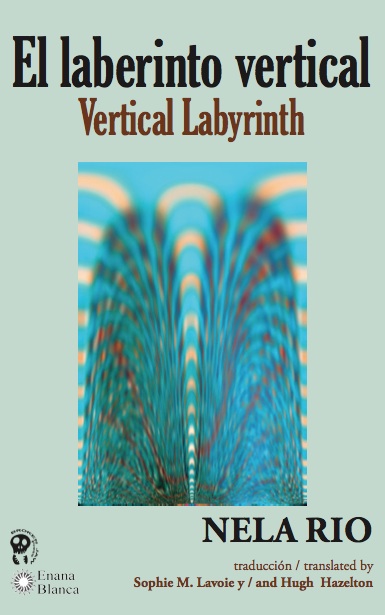

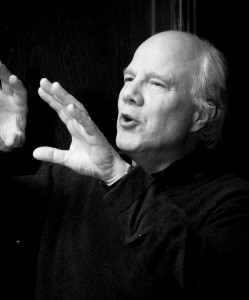



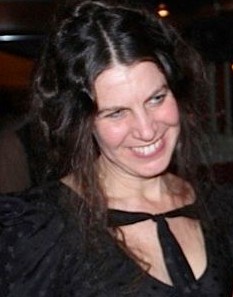


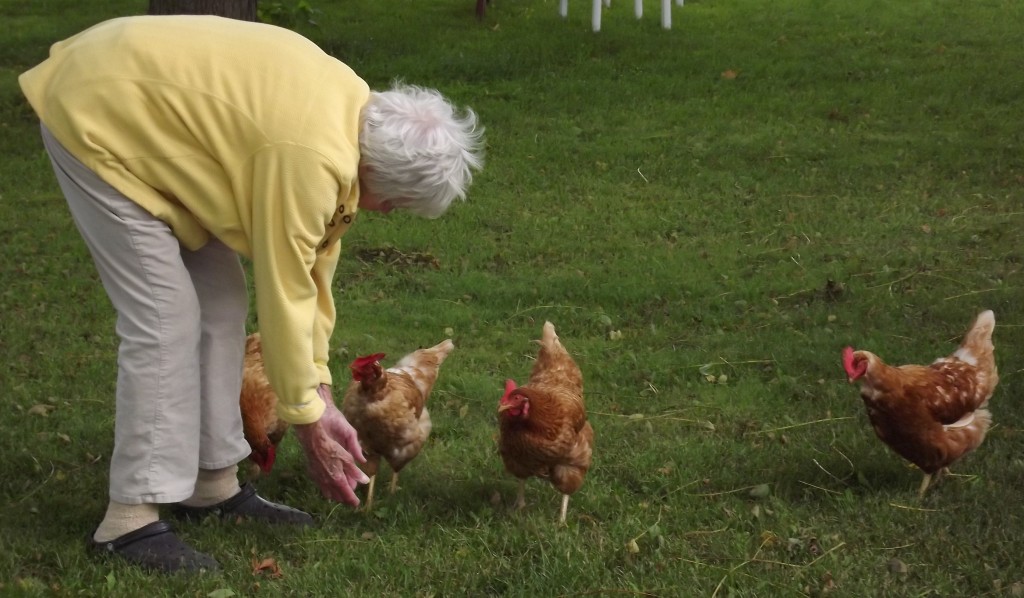
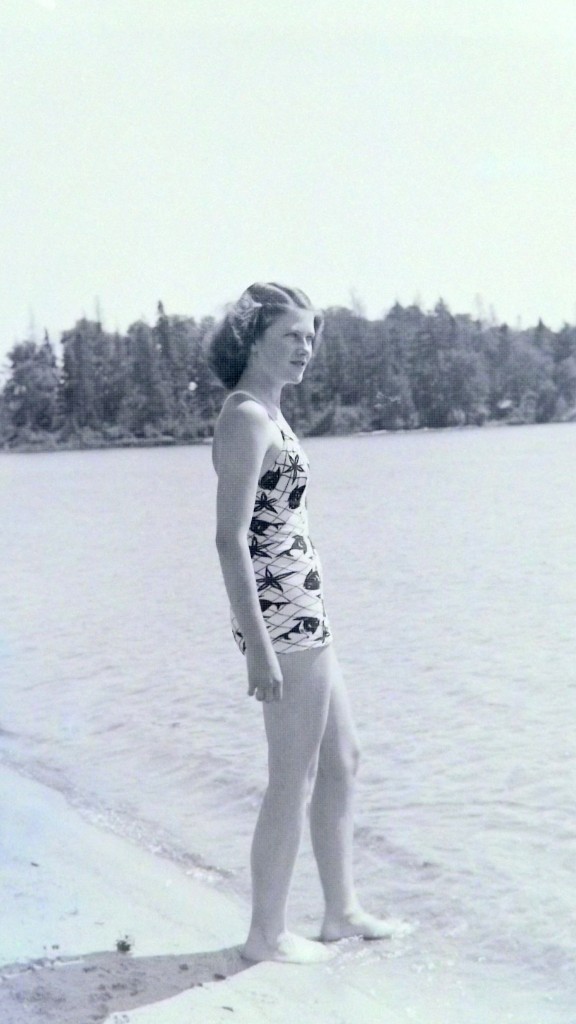













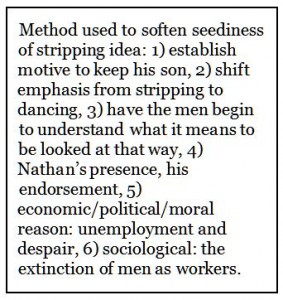

























 Picasso’s Les Desmoiselles d’Avignon (1907) and Pende sickness masks
Picasso’s Les Desmoiselles d’Avignon (1907) and Pende sickness masks